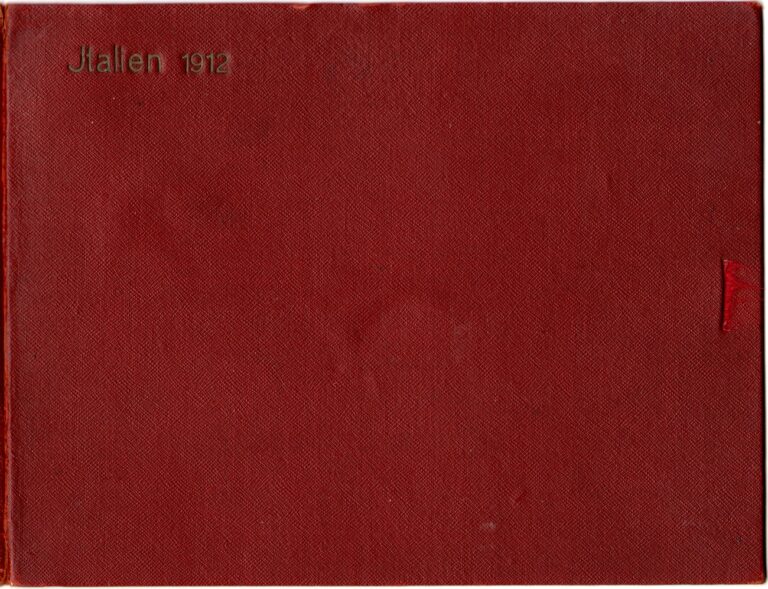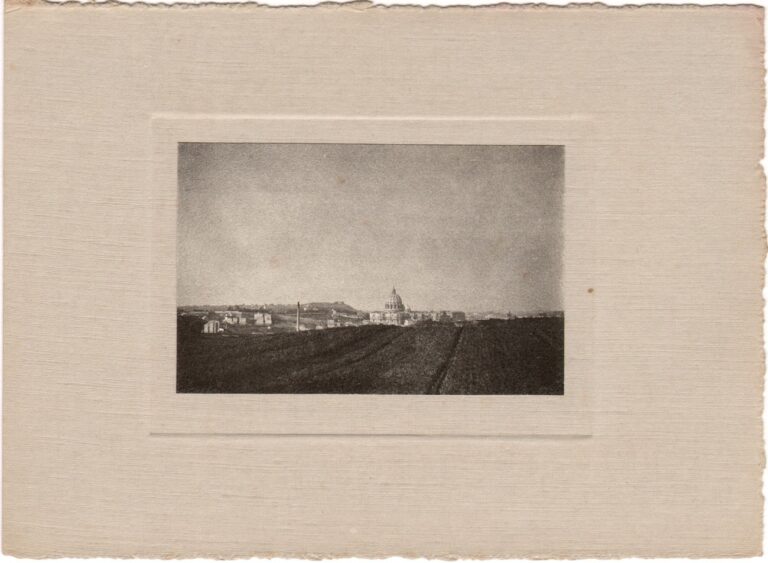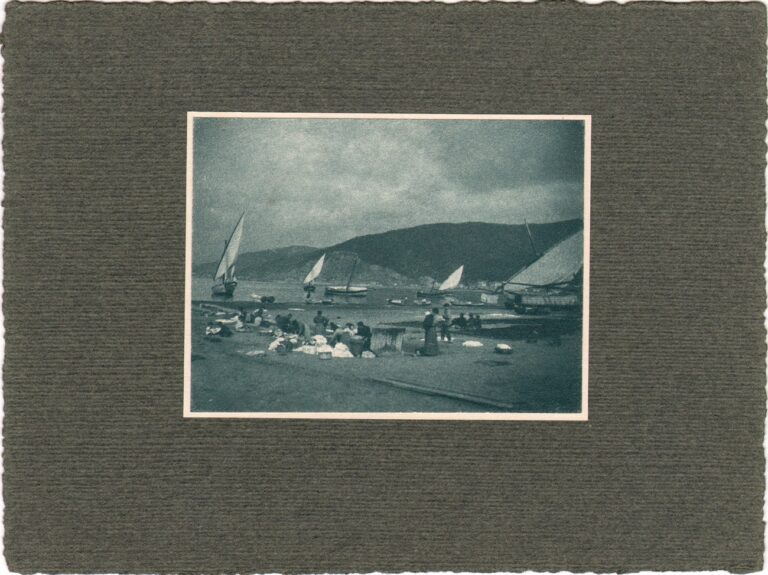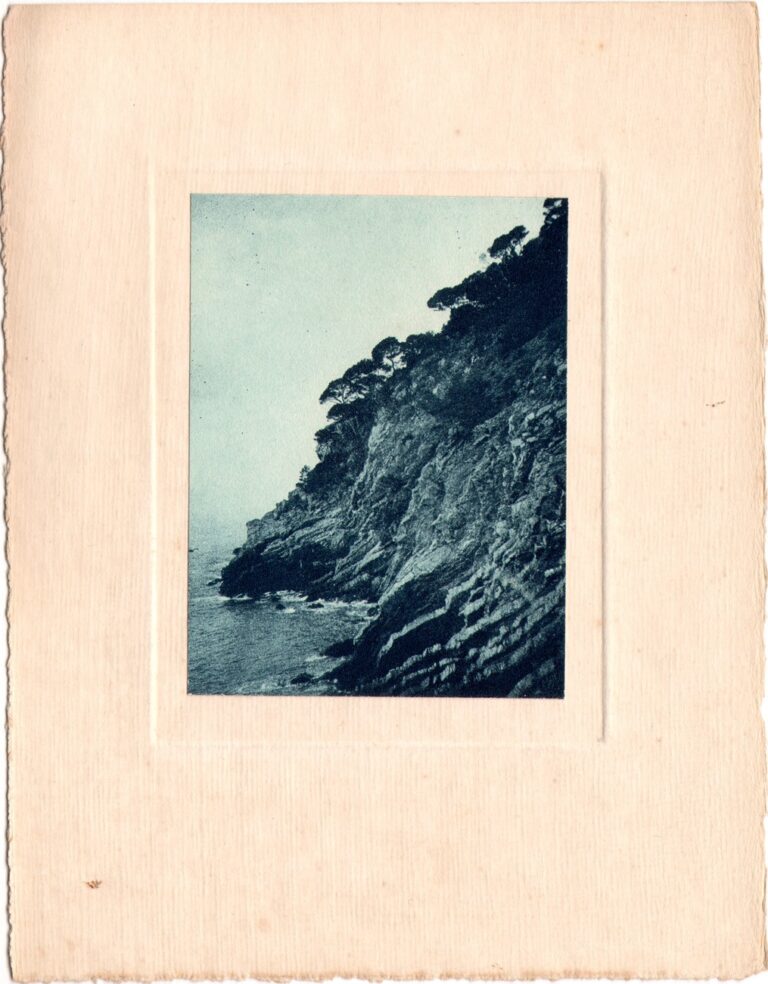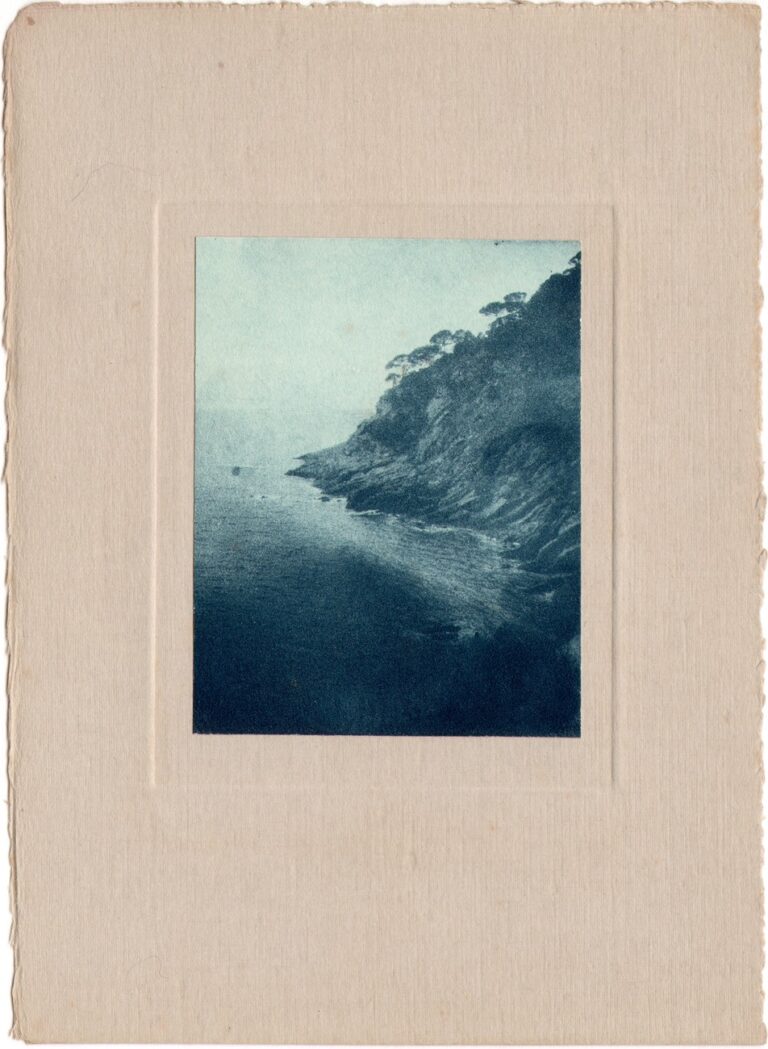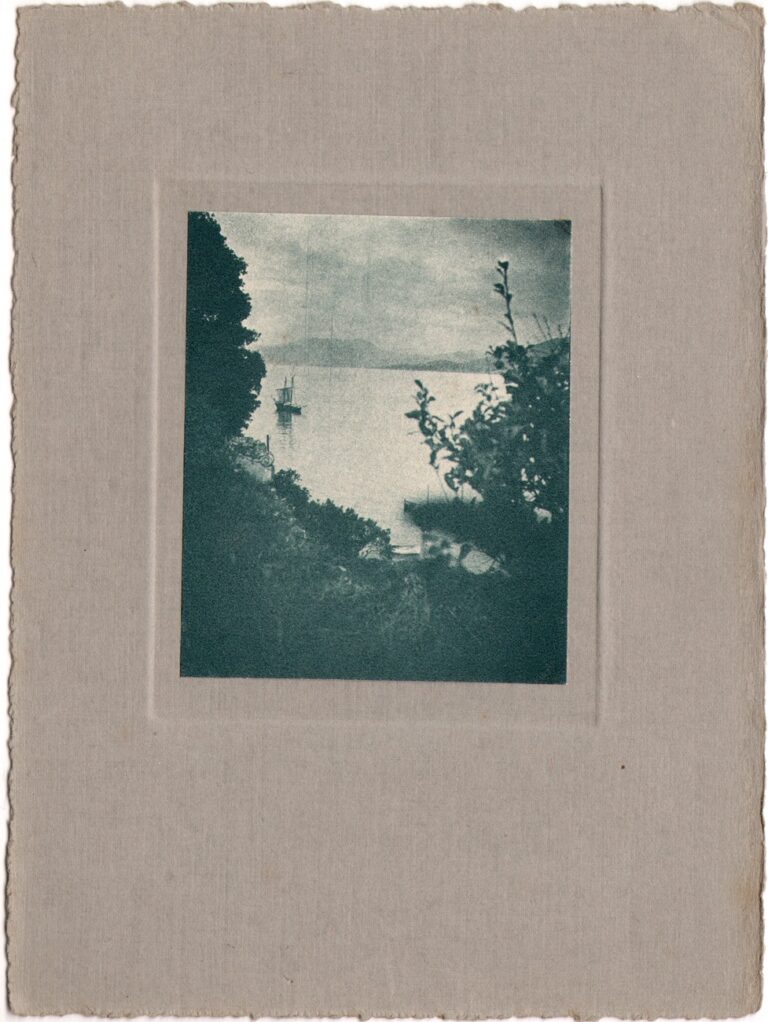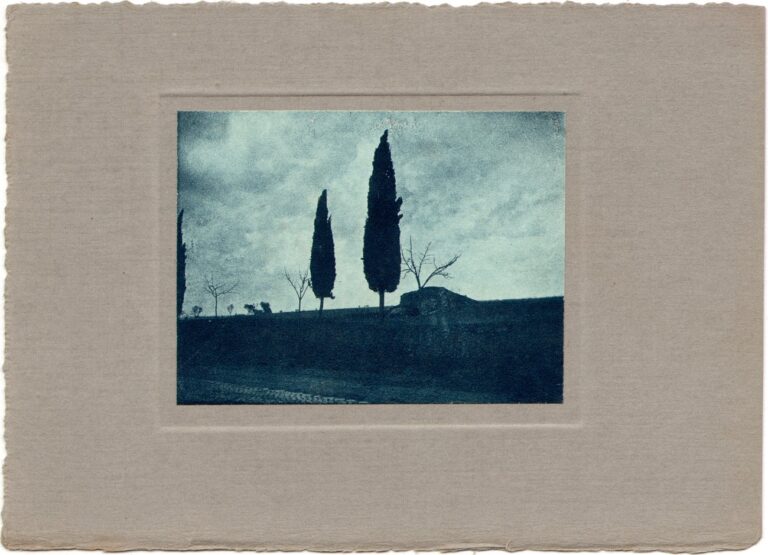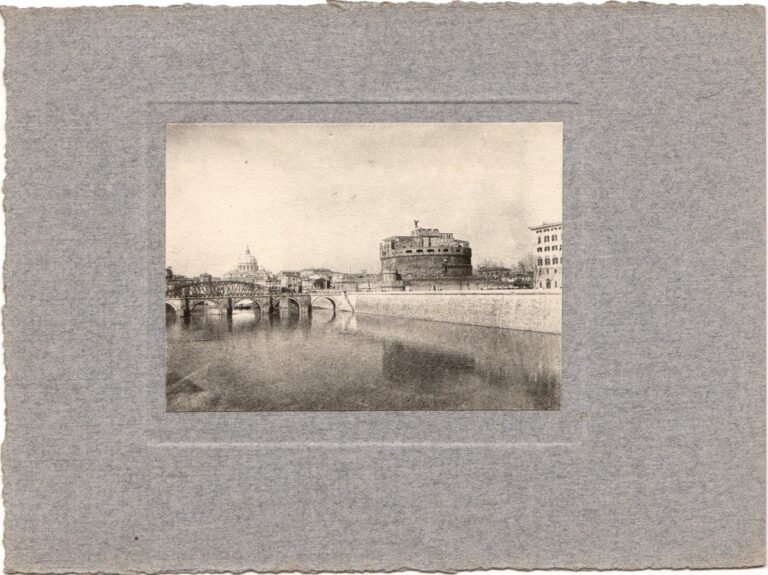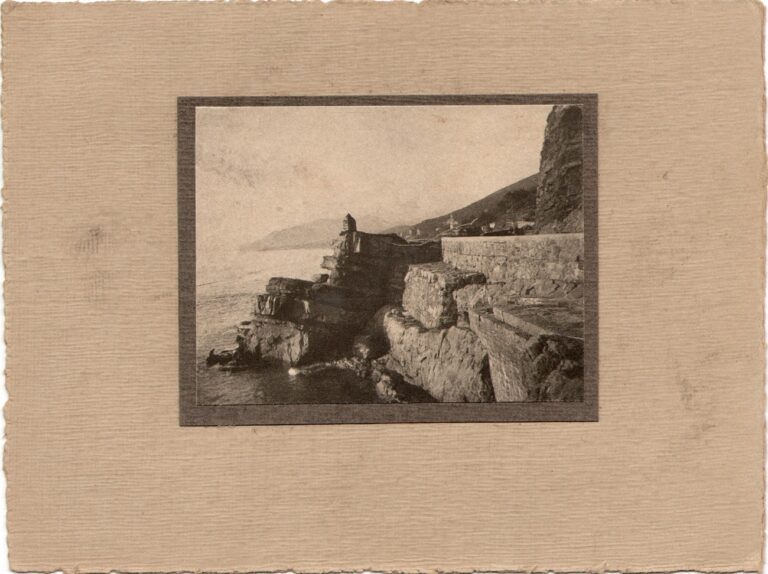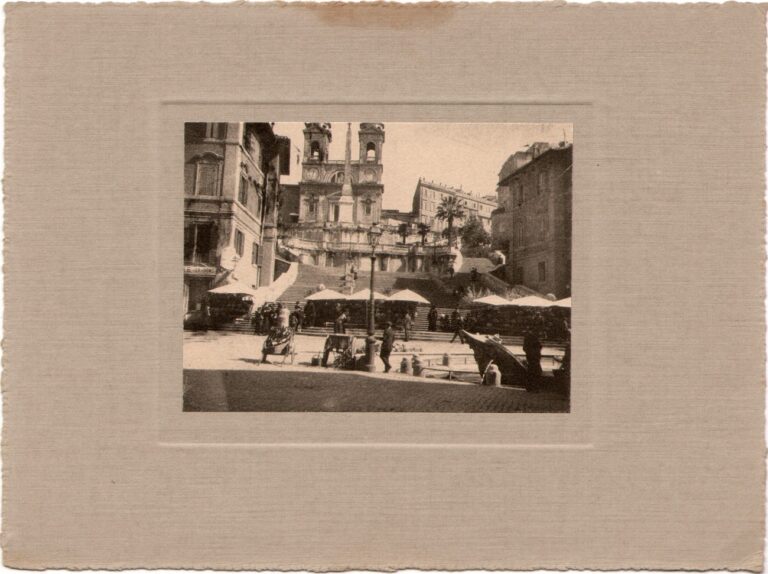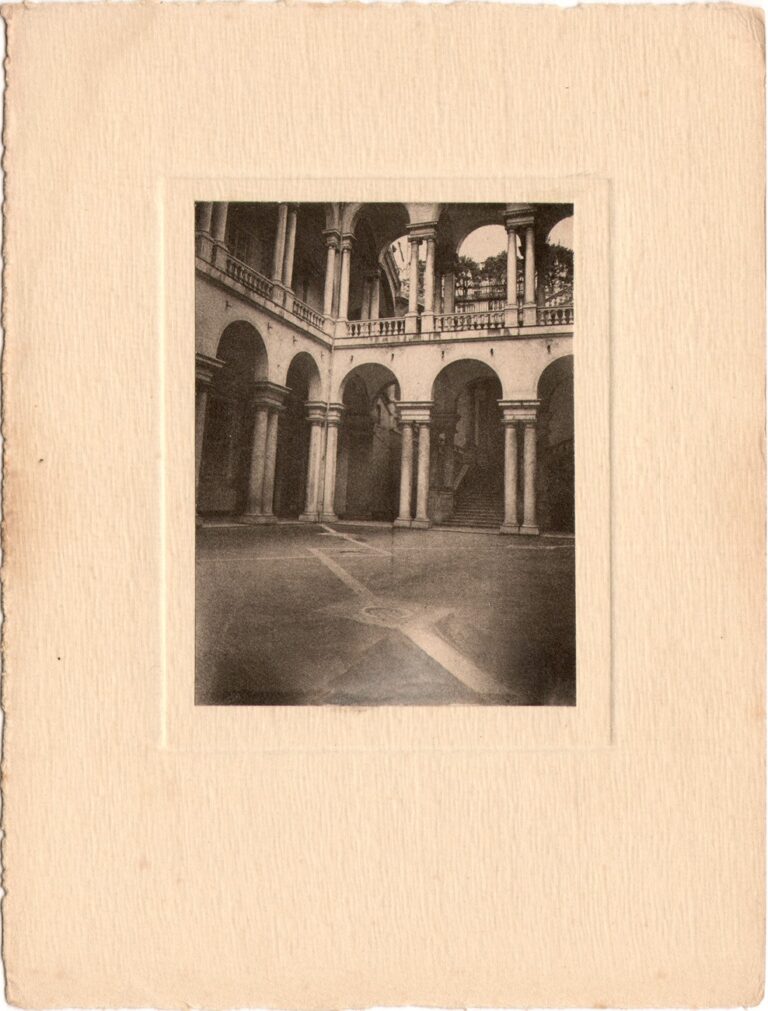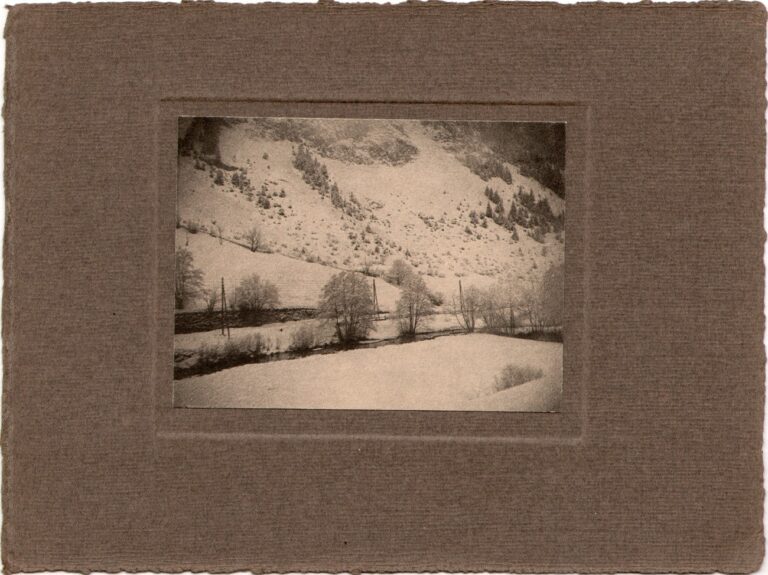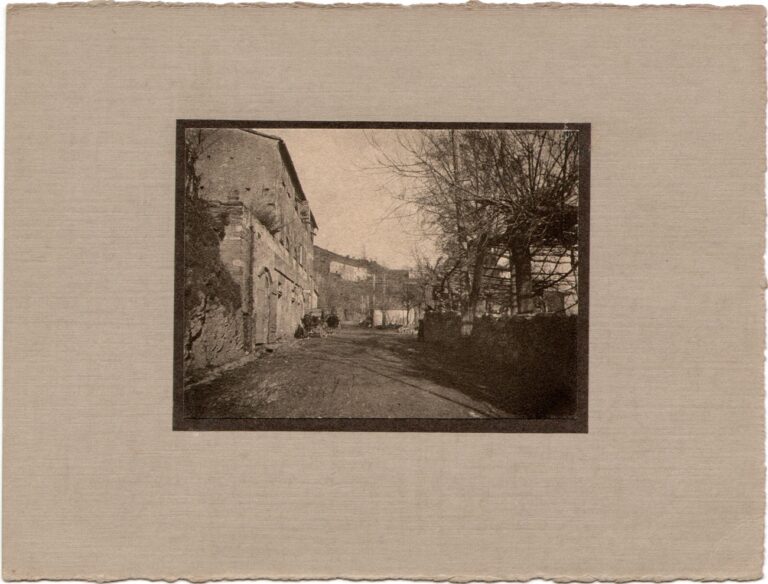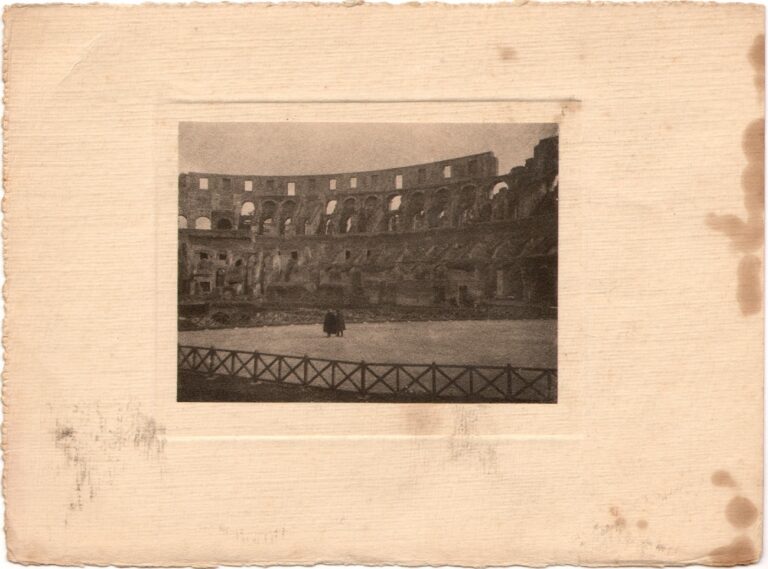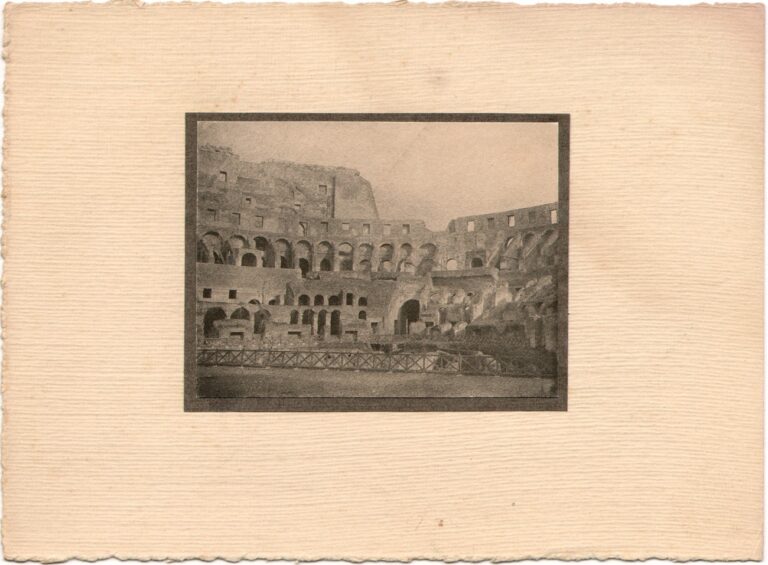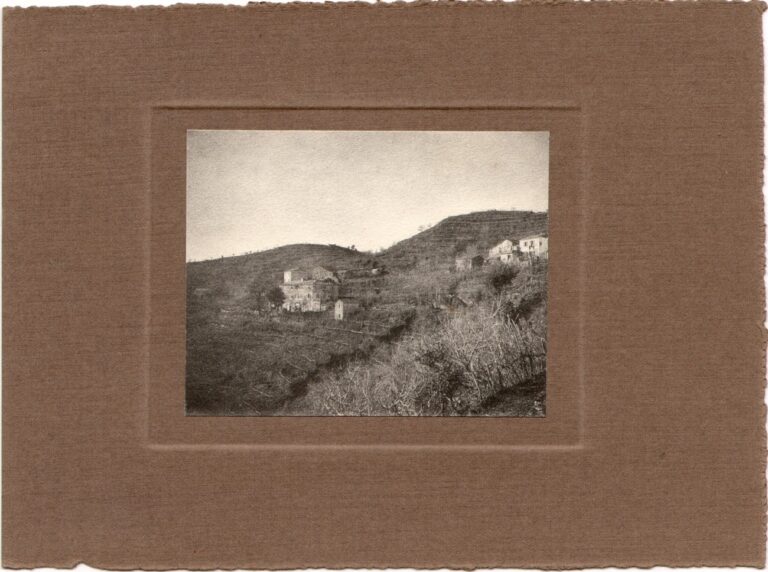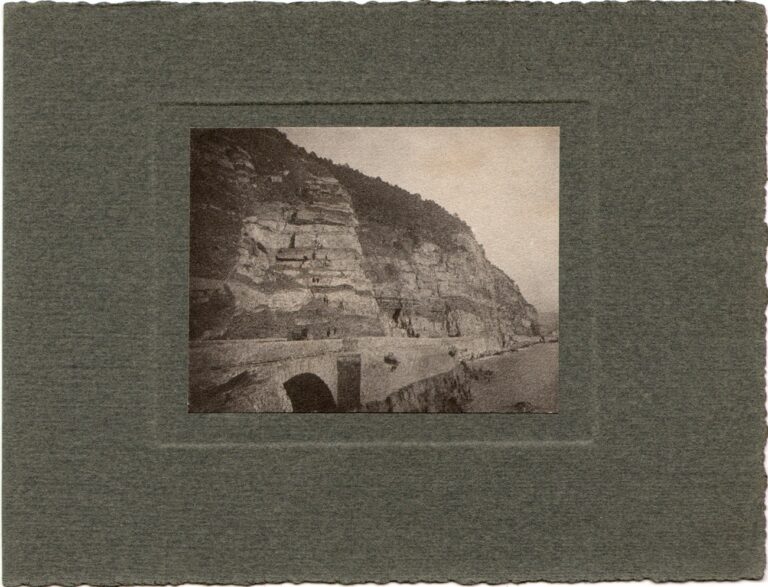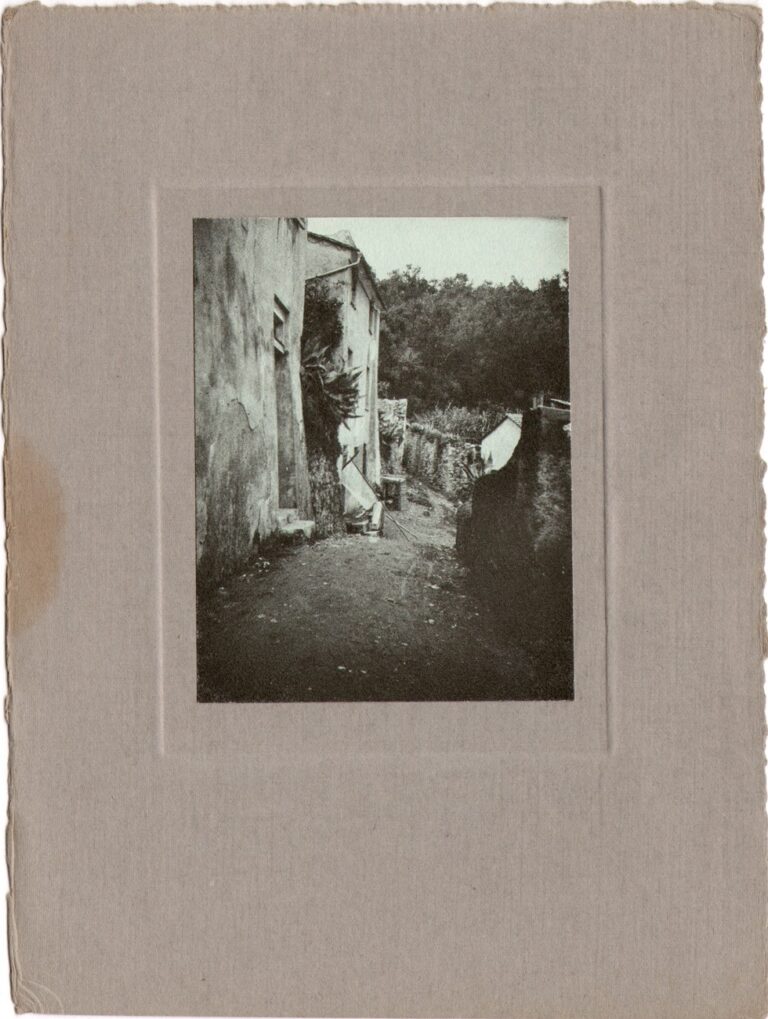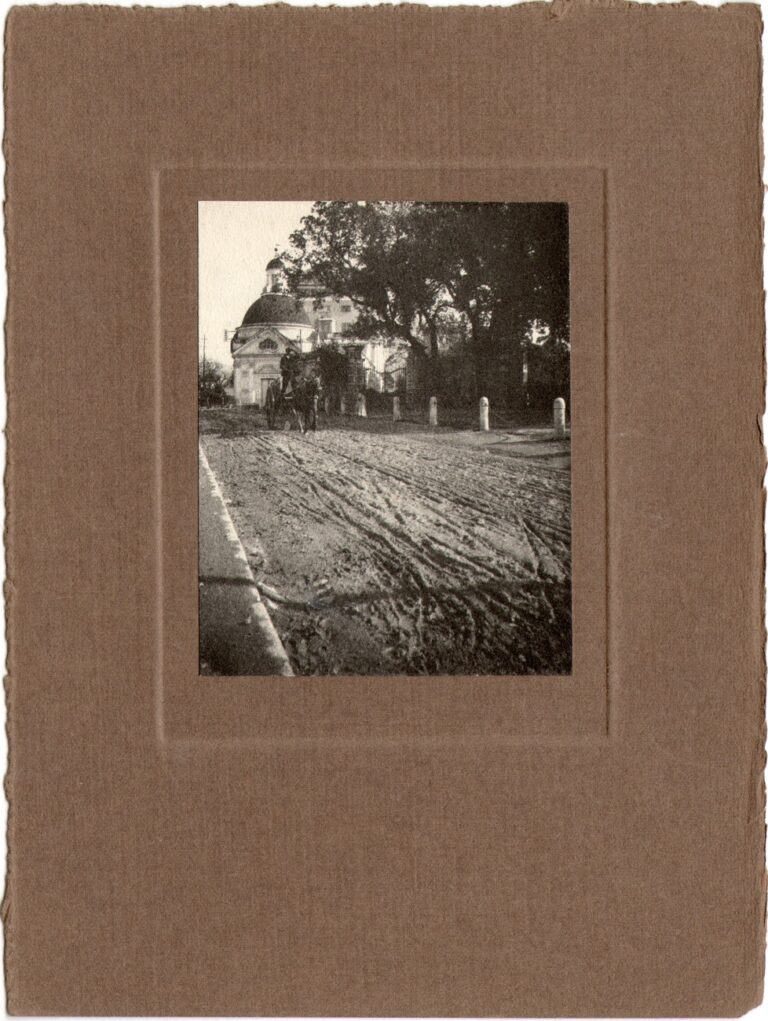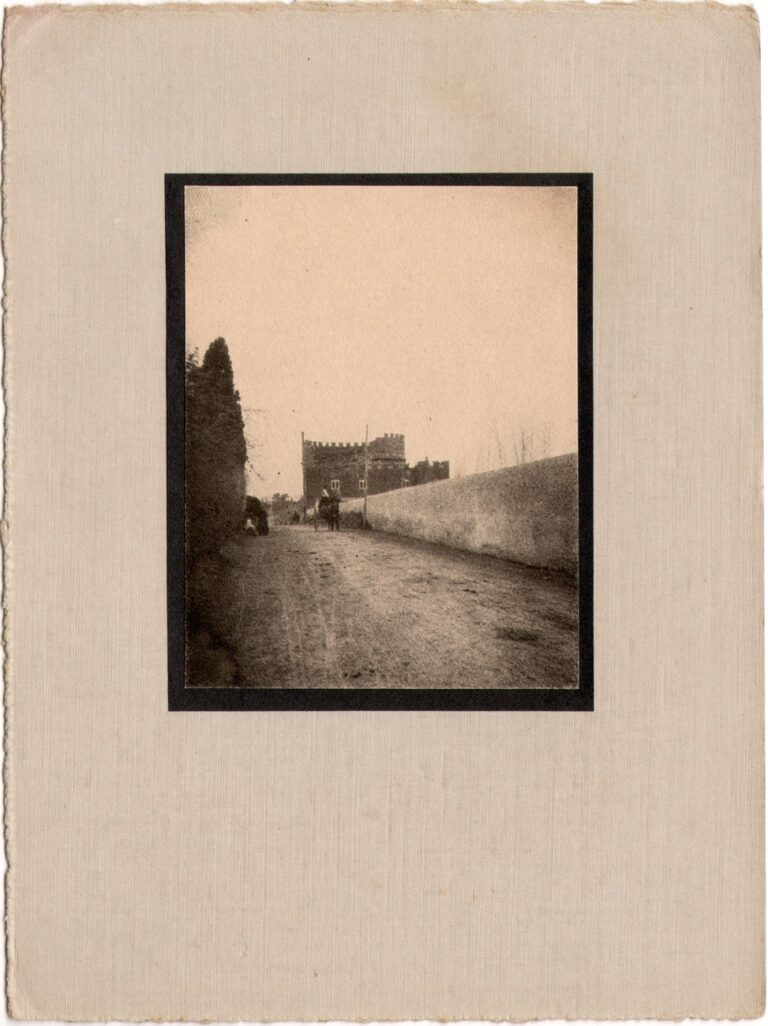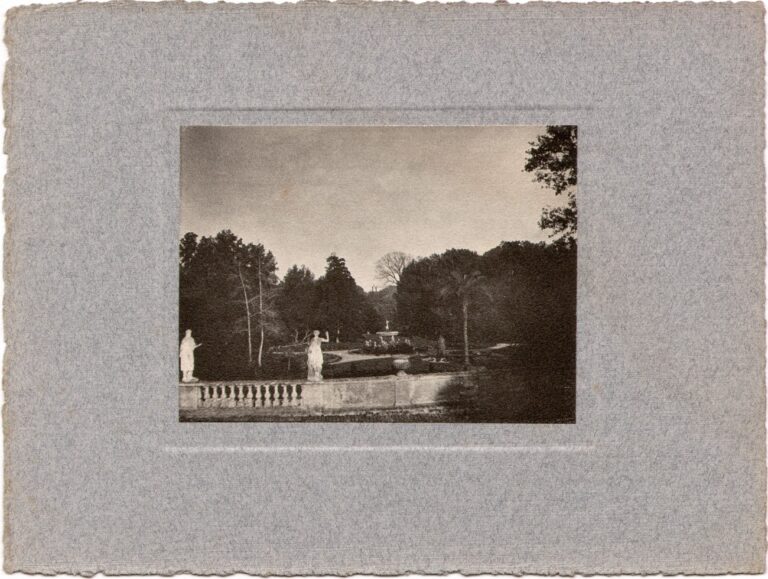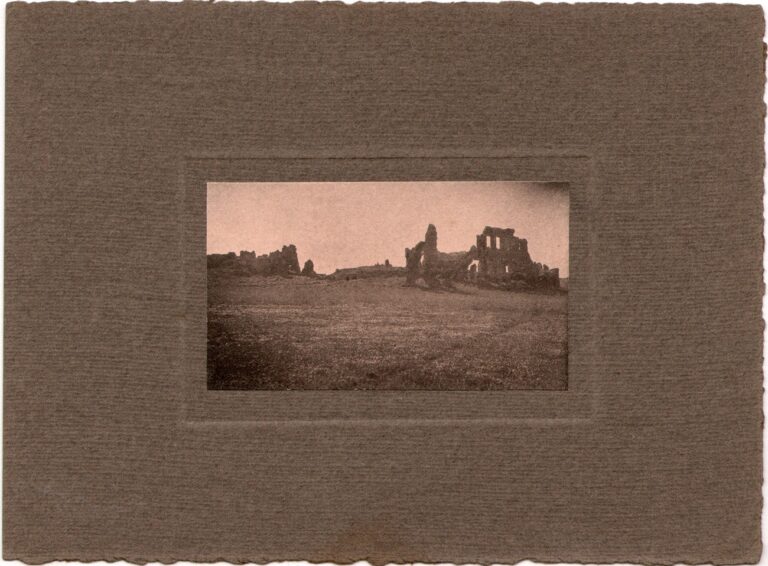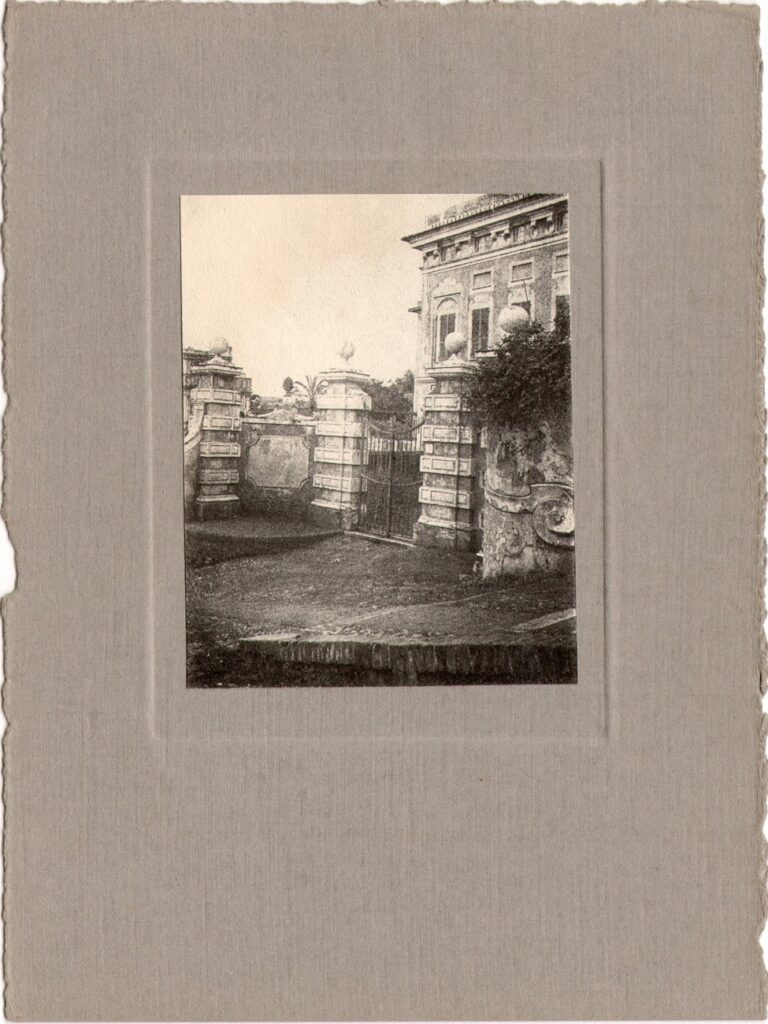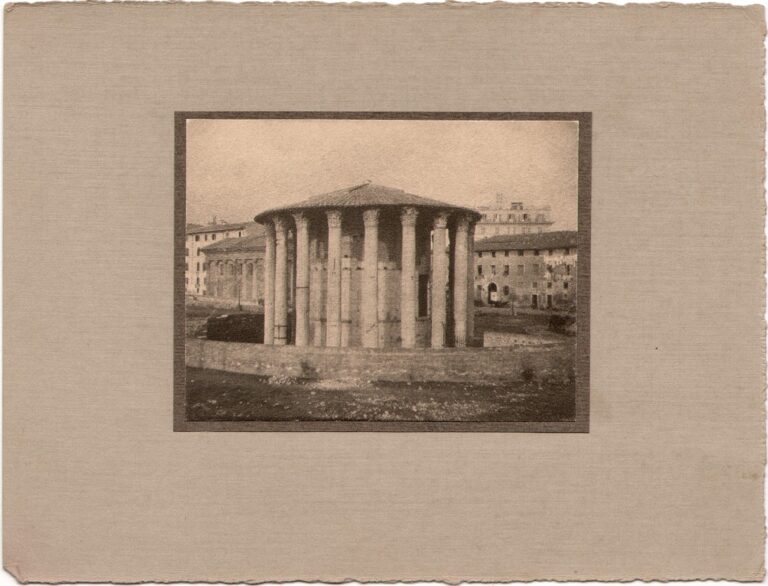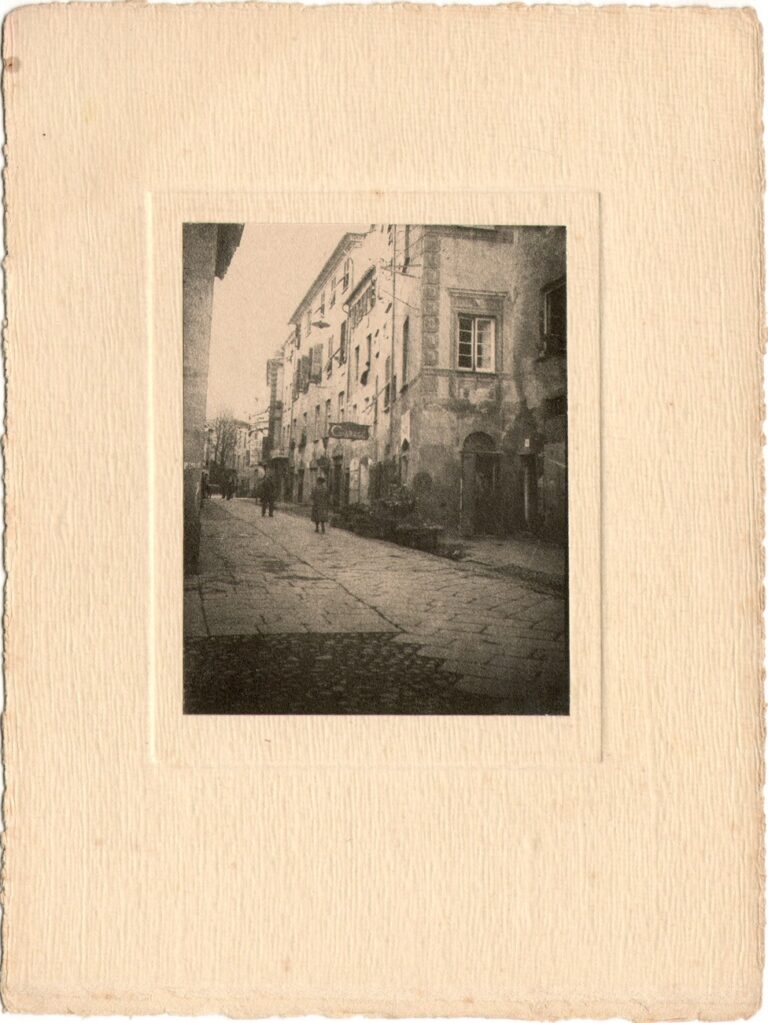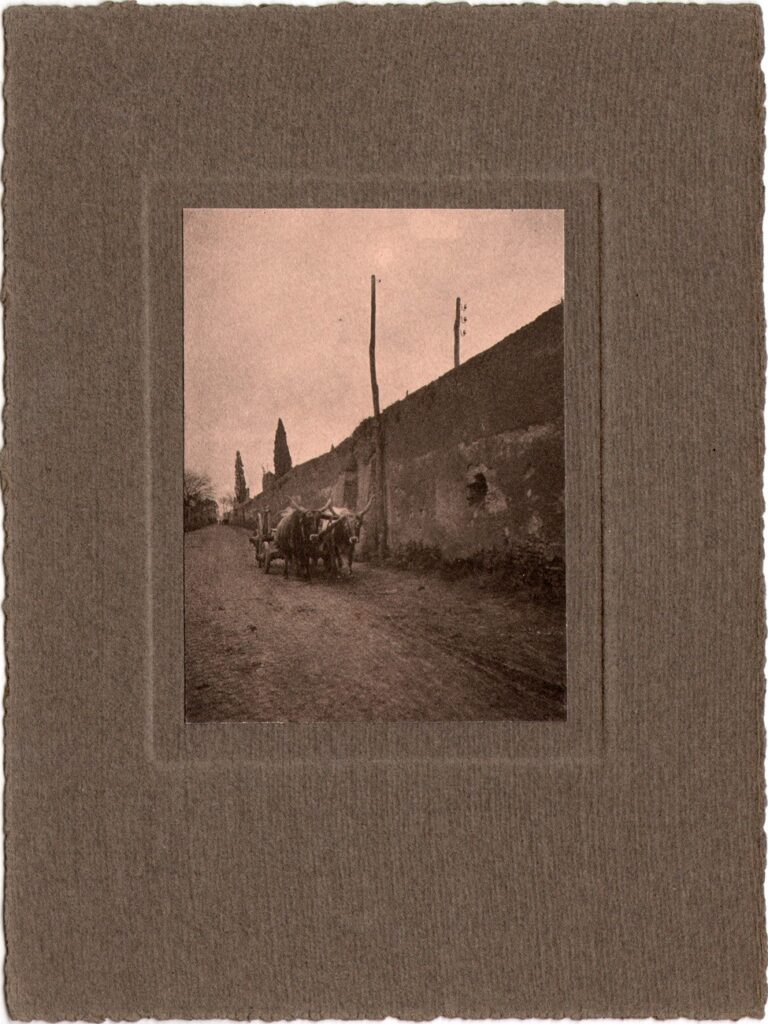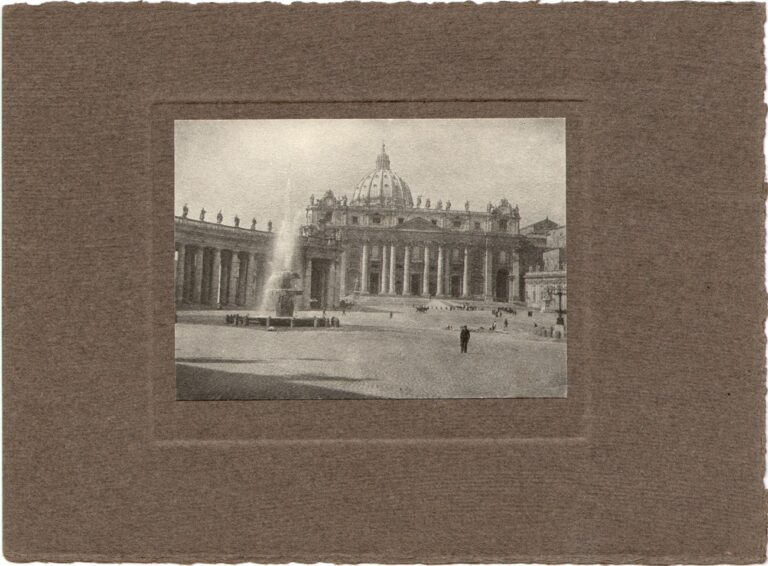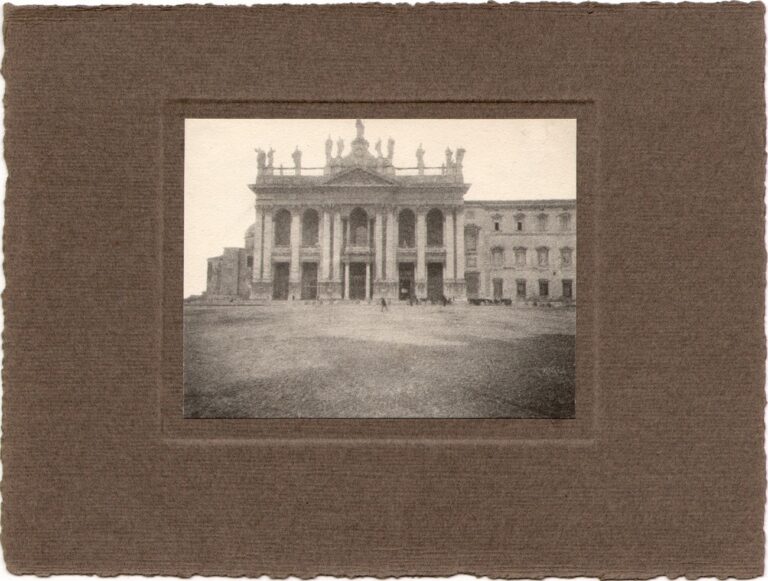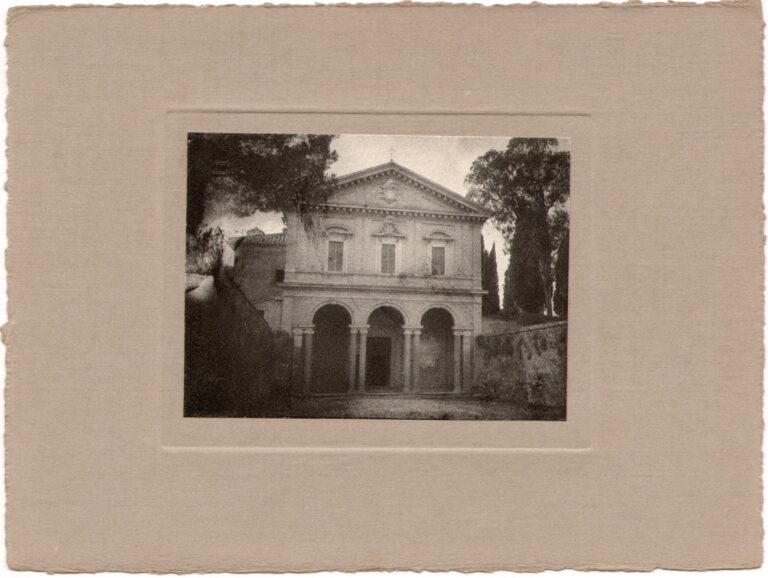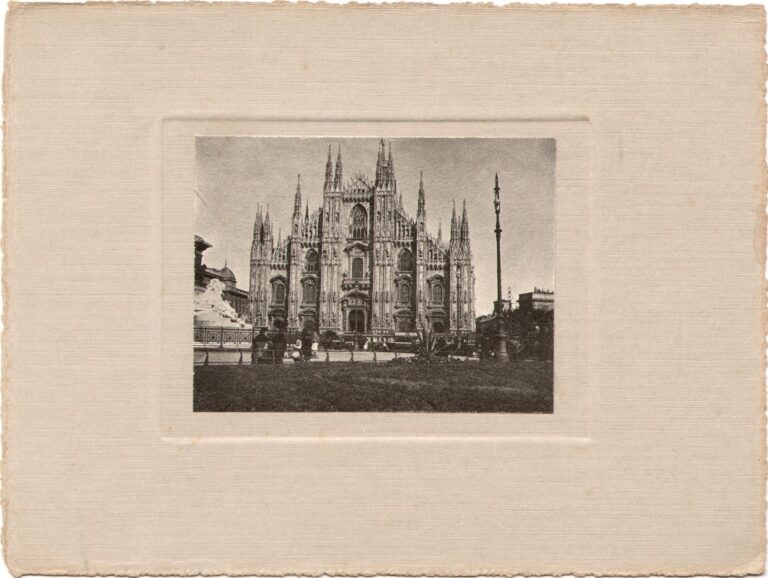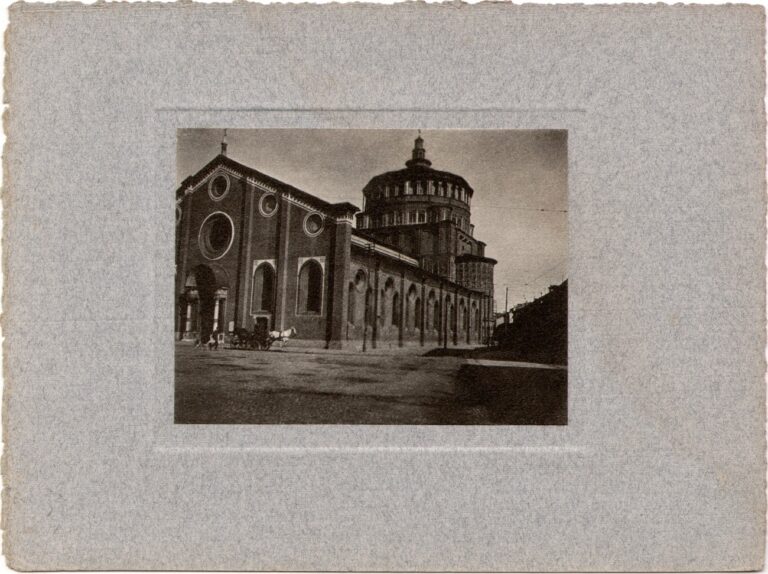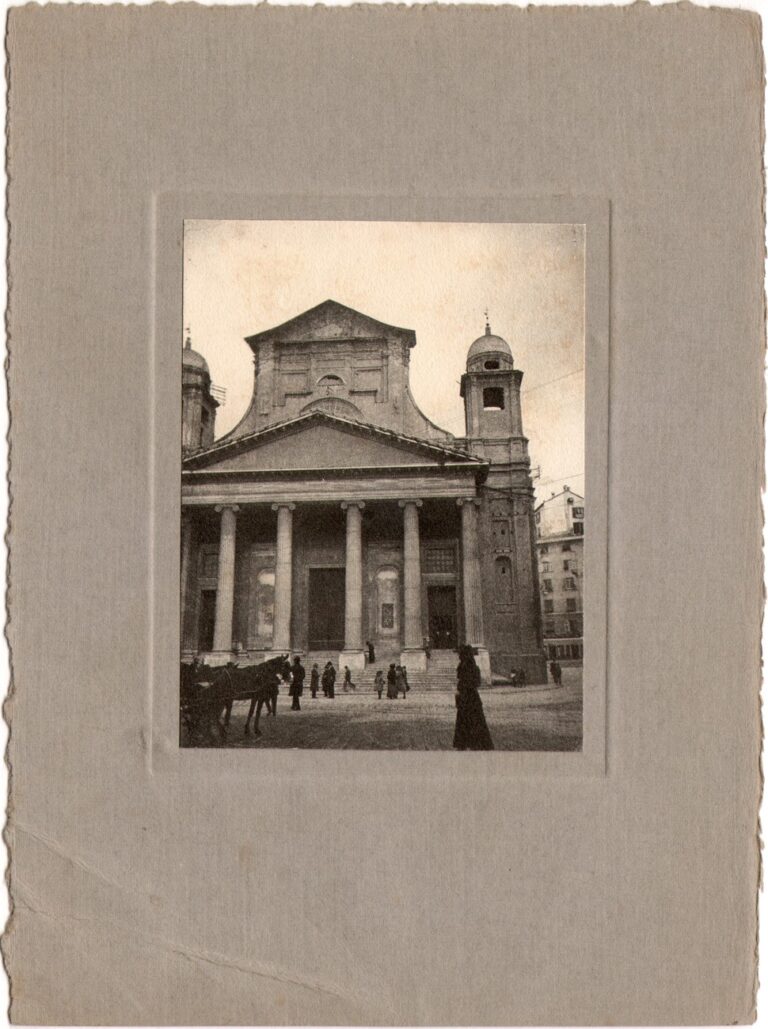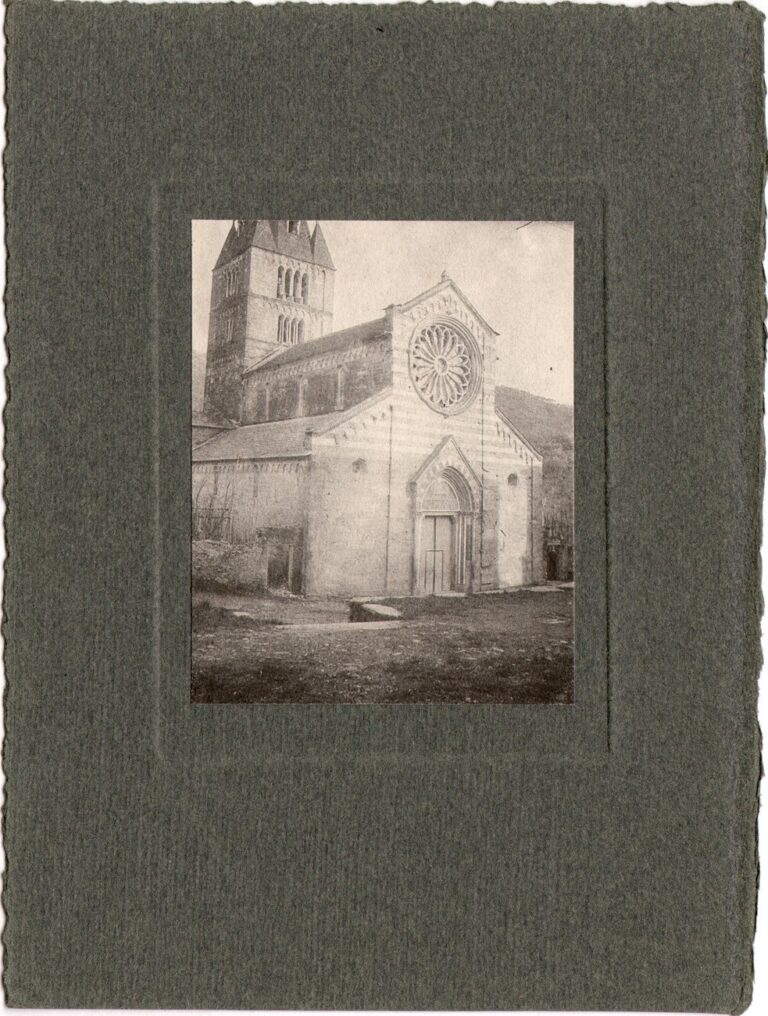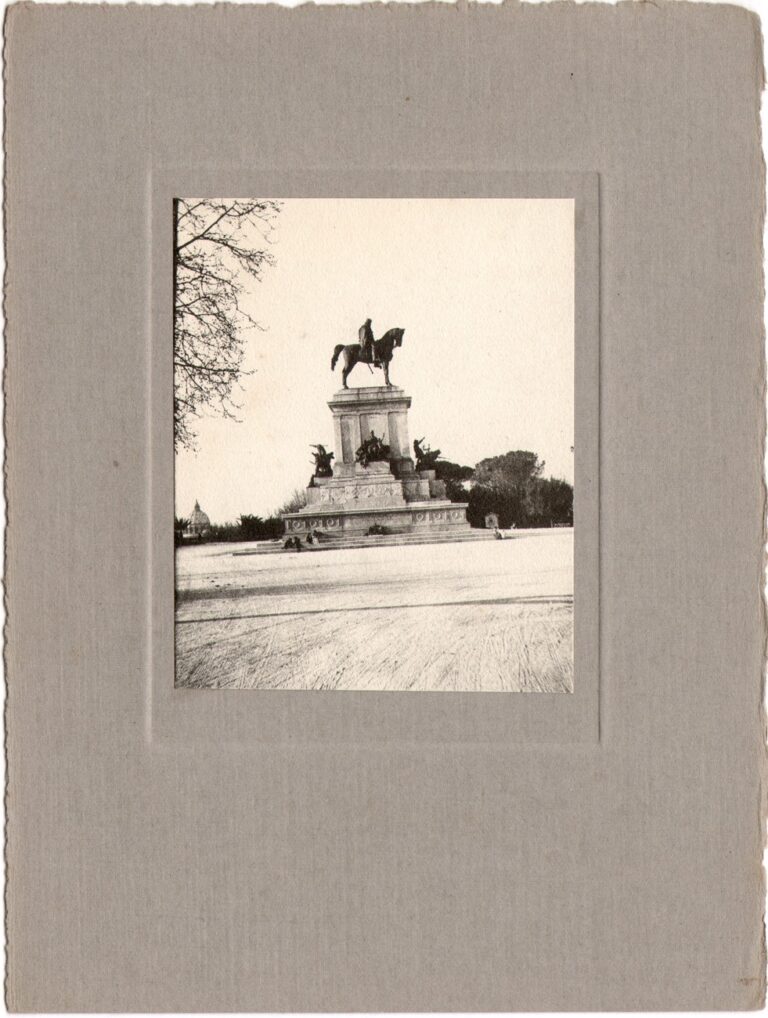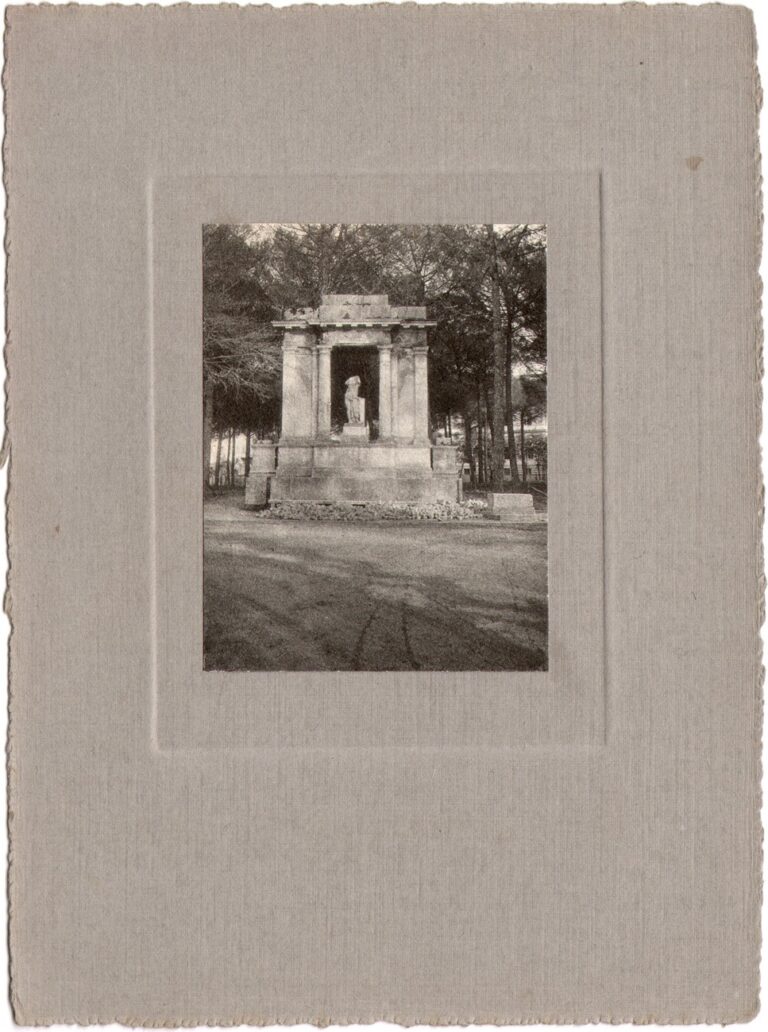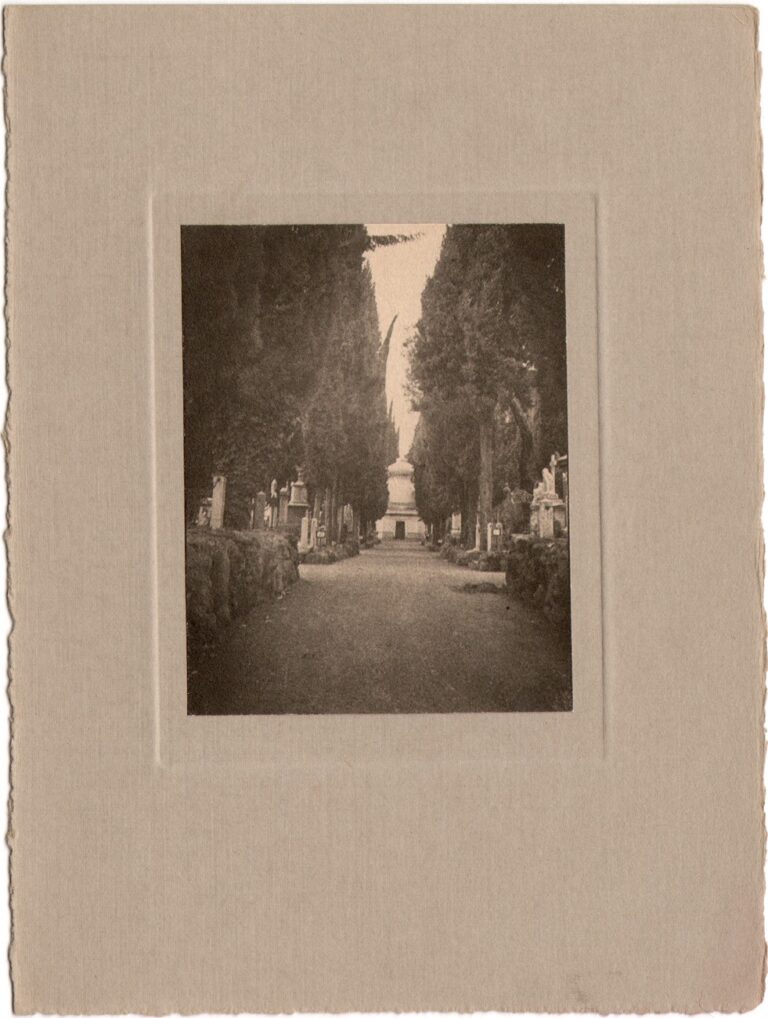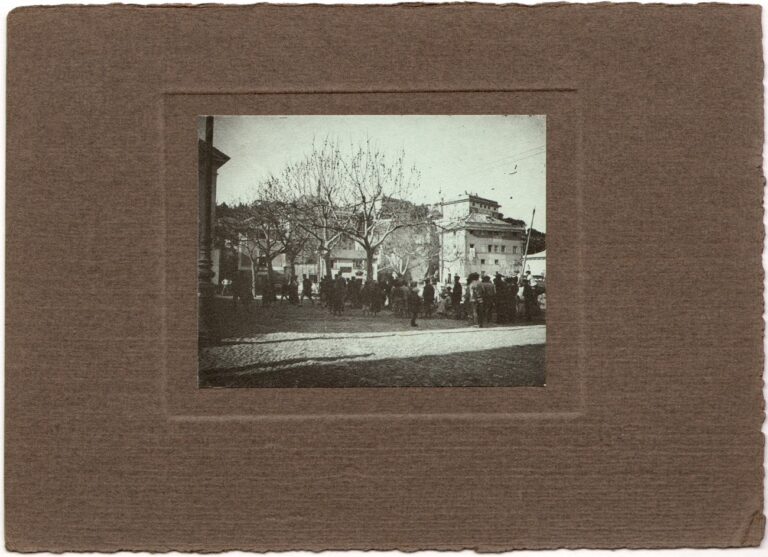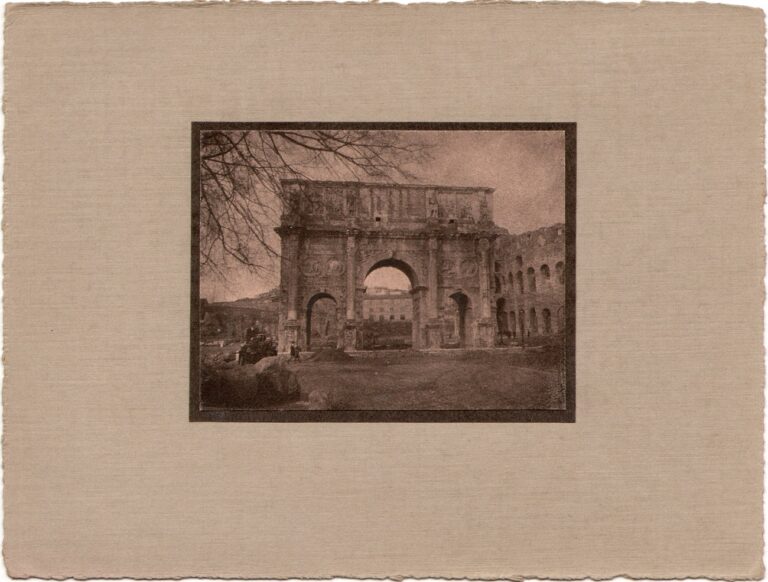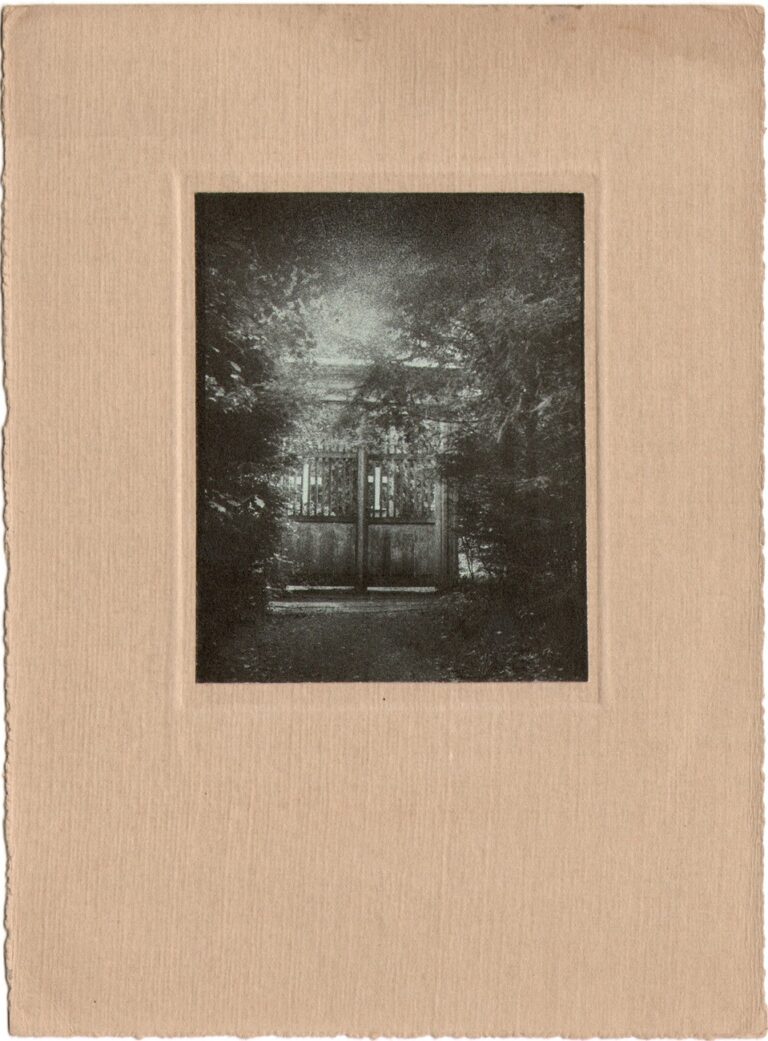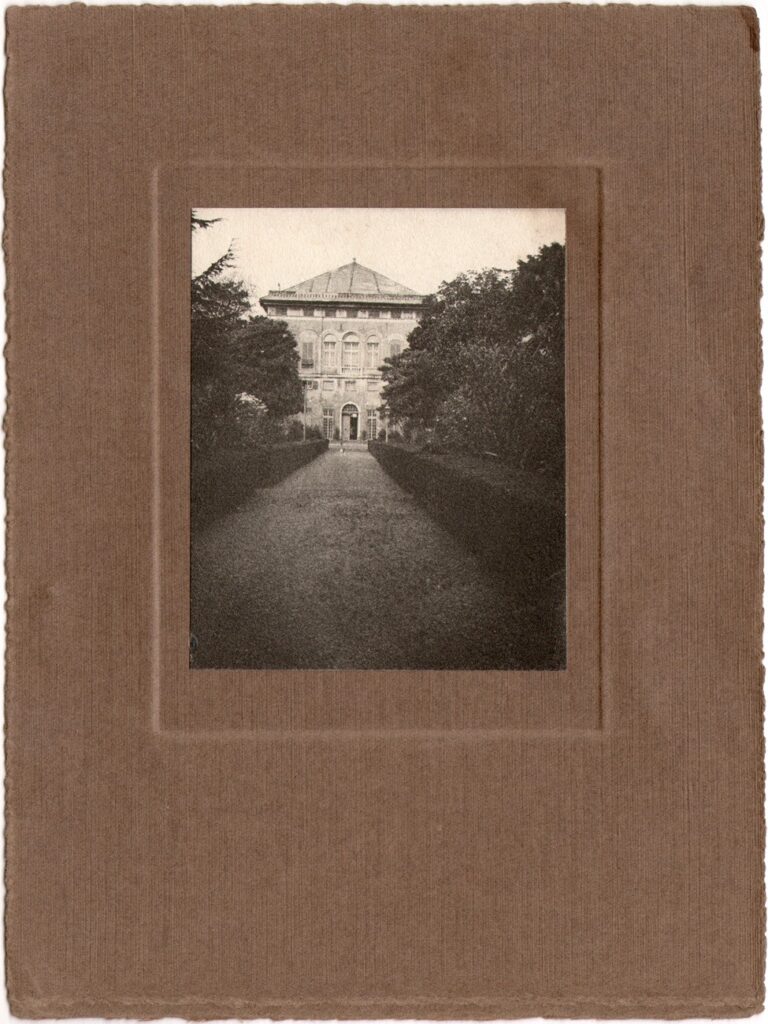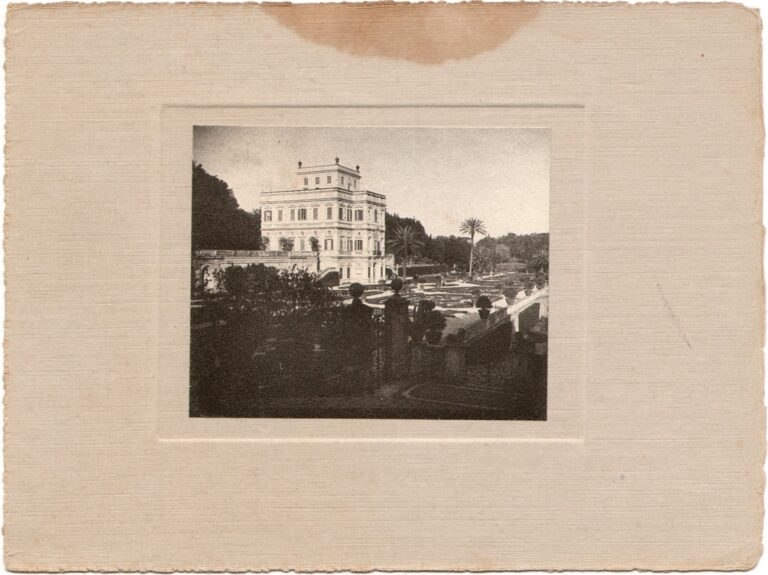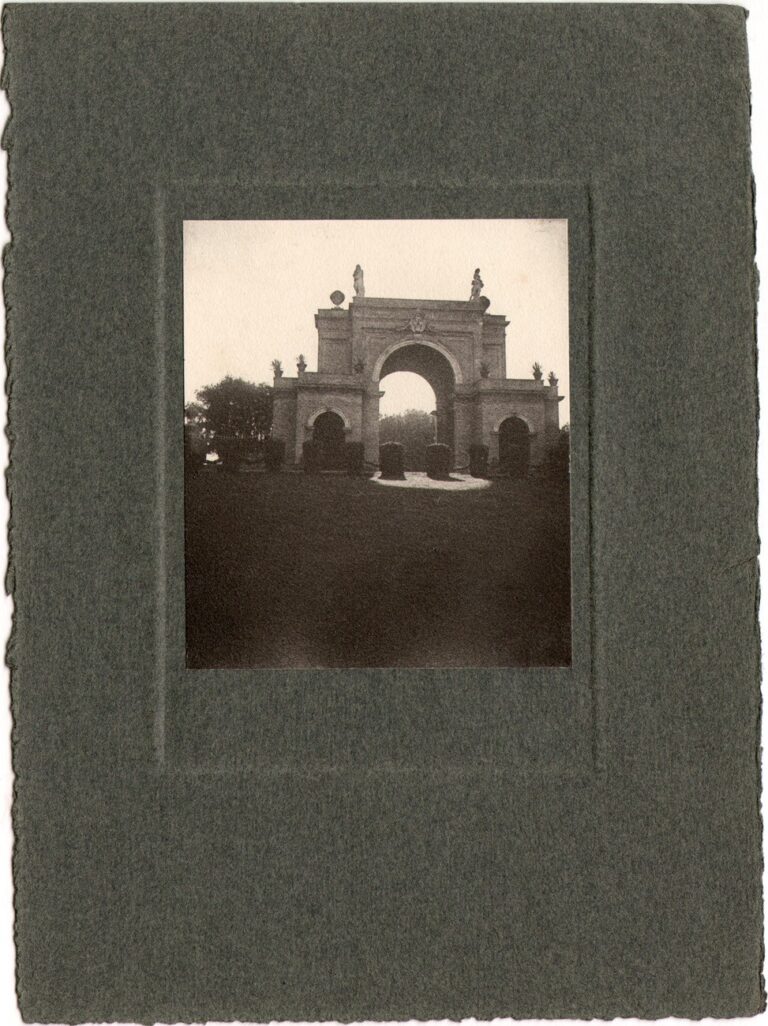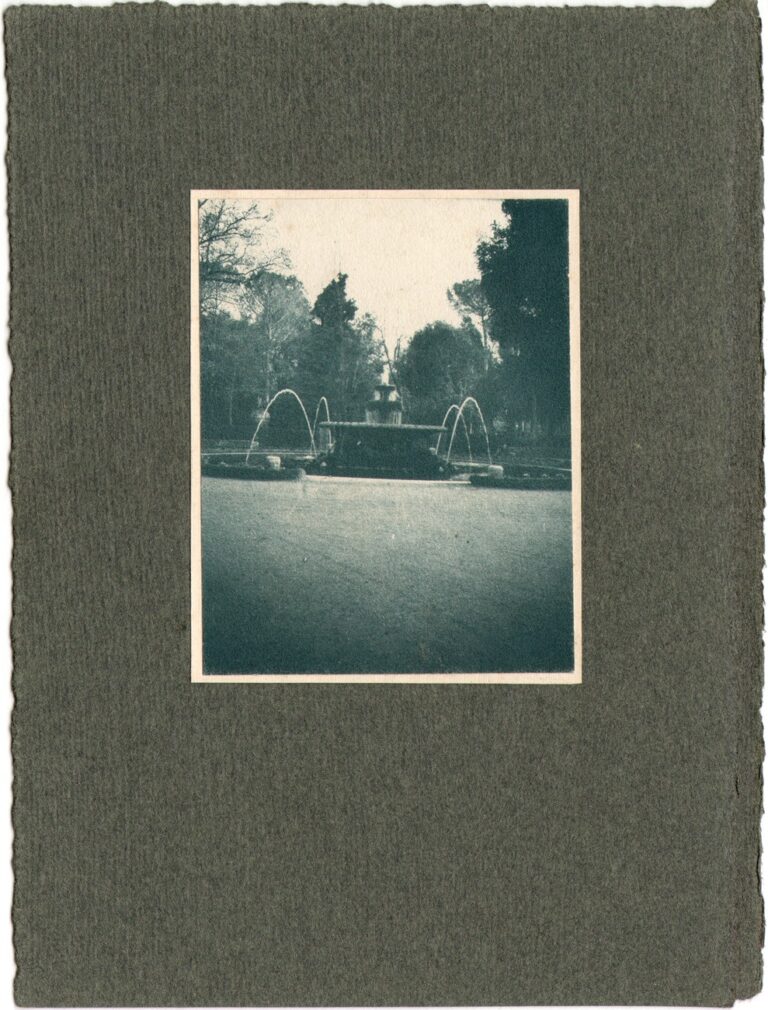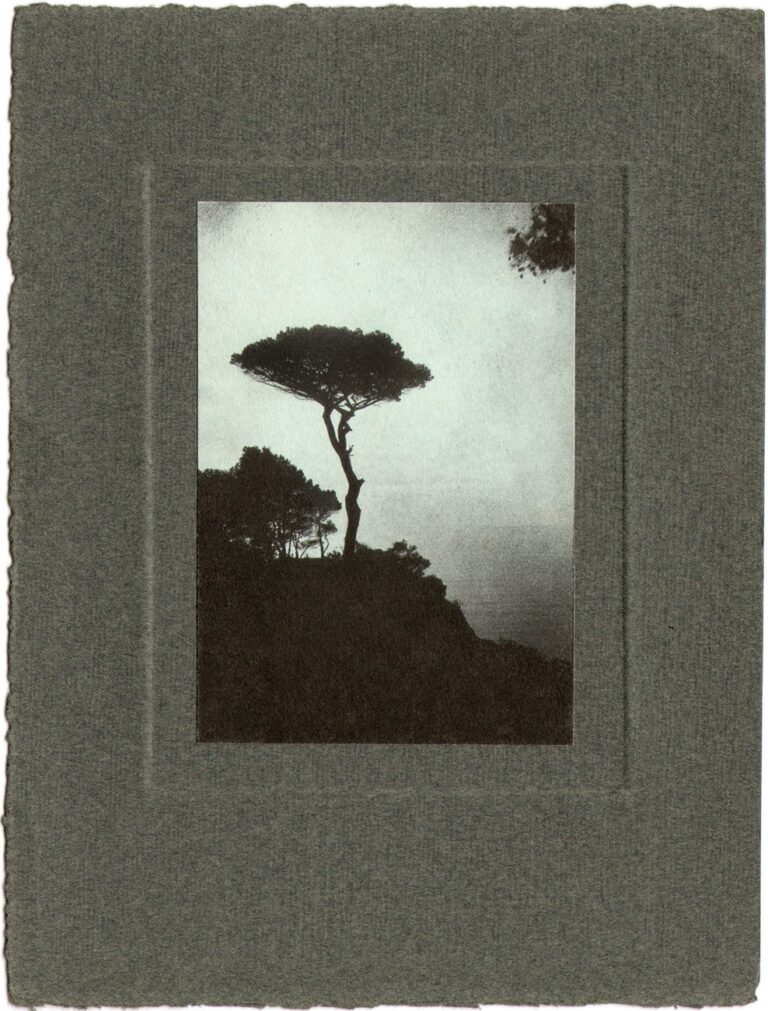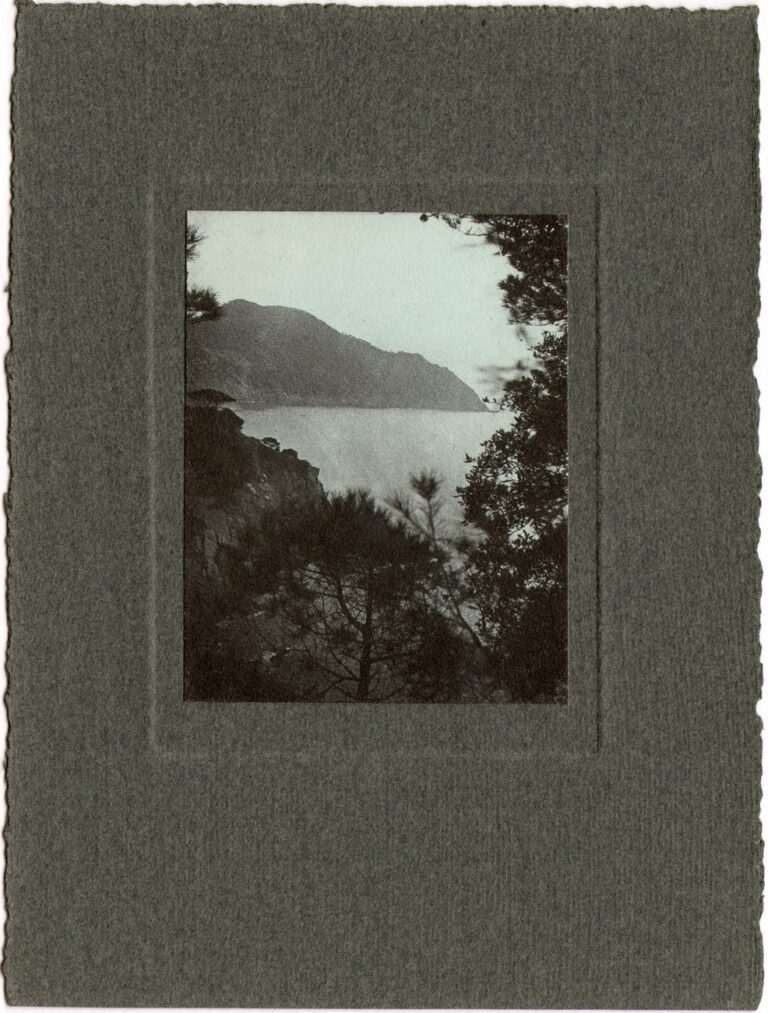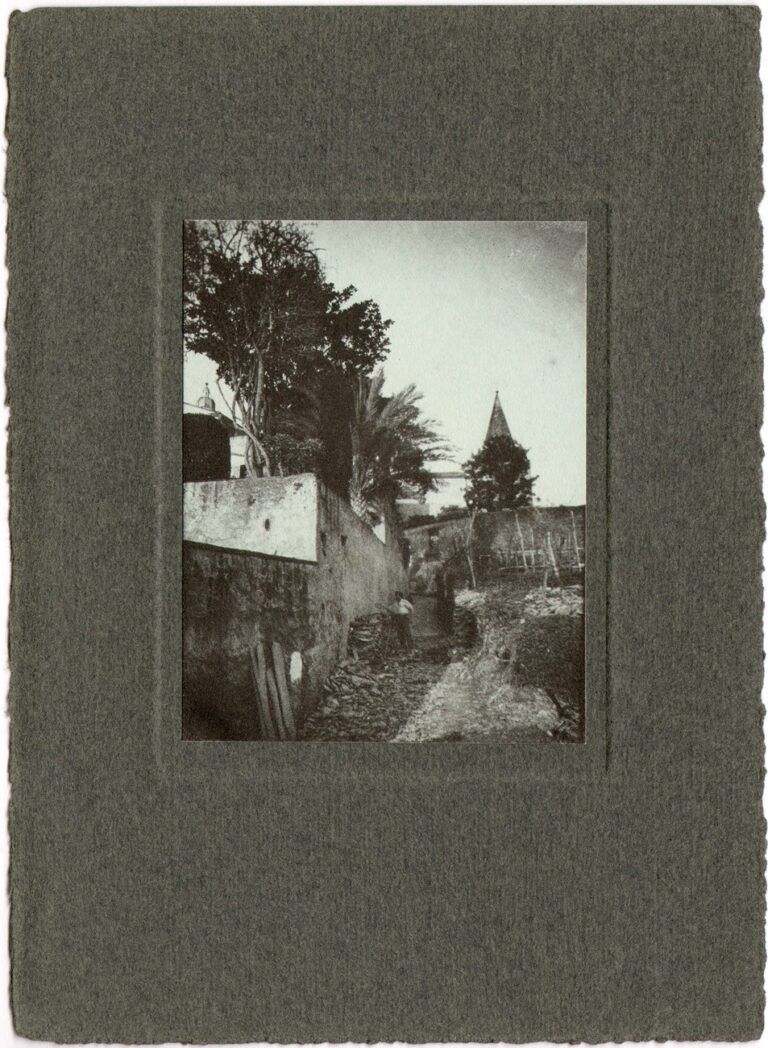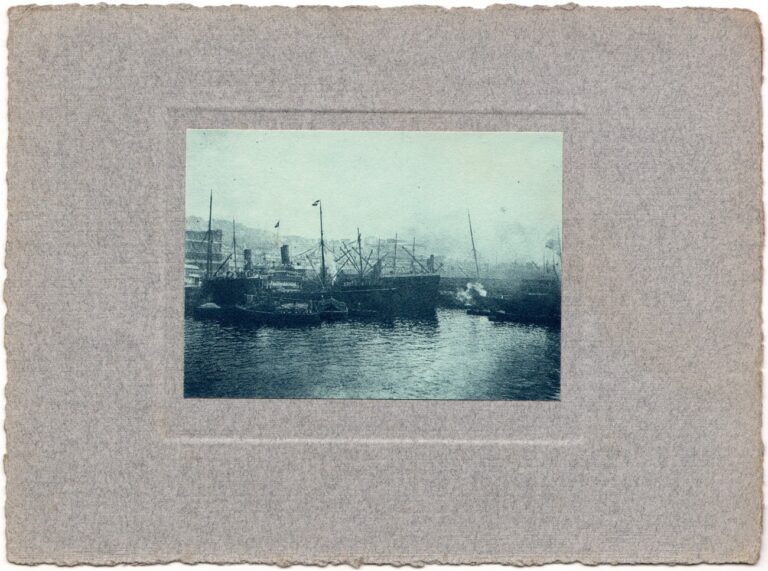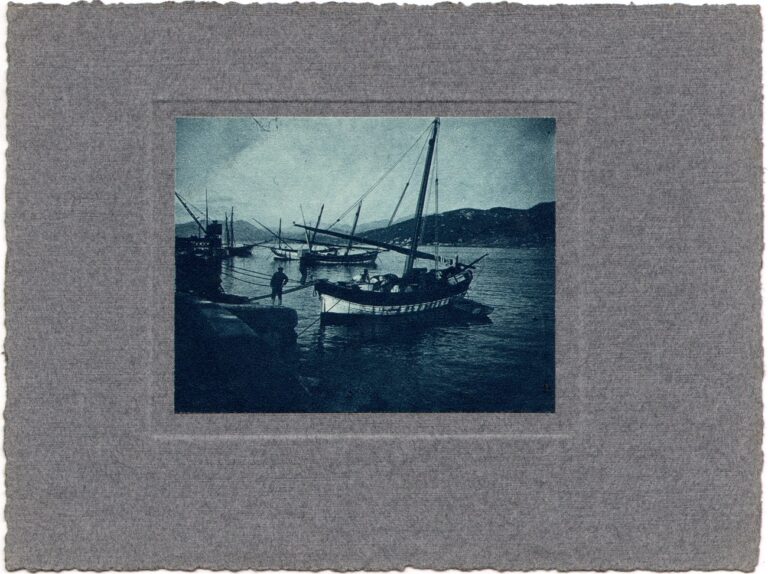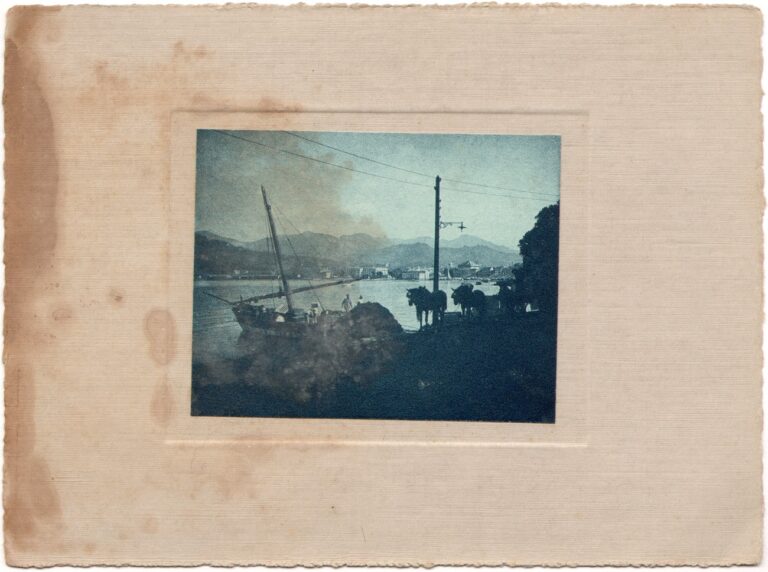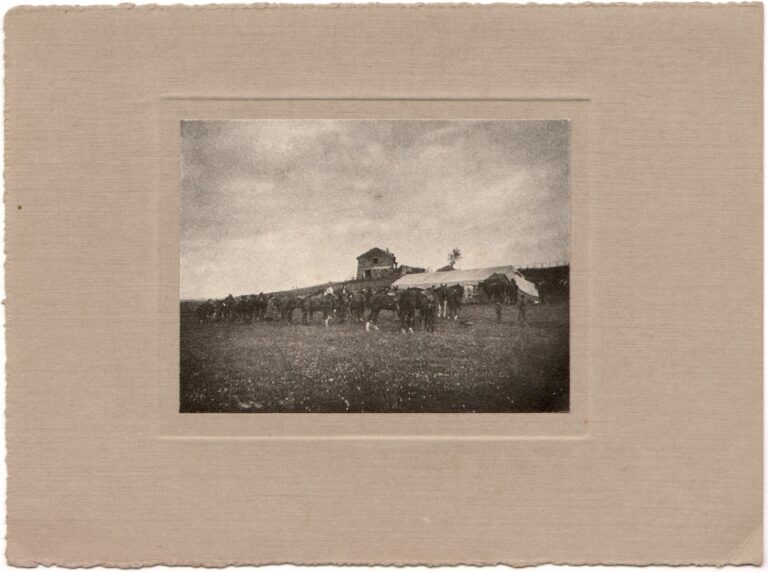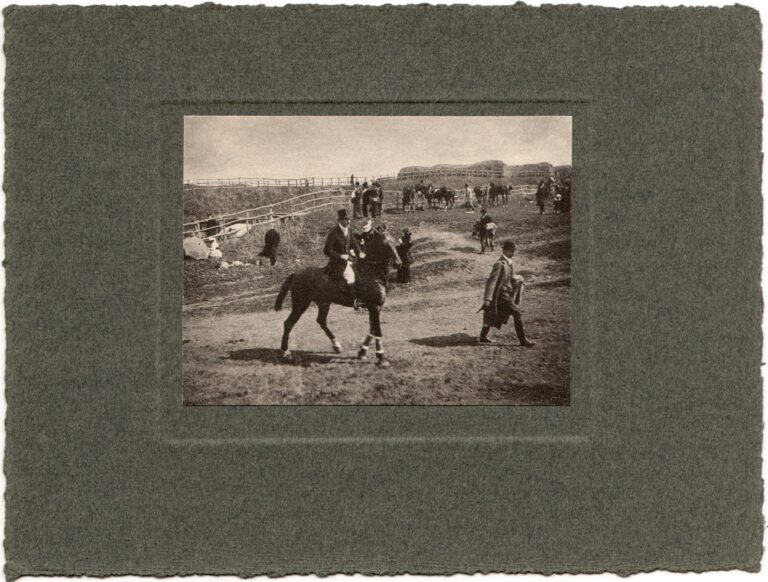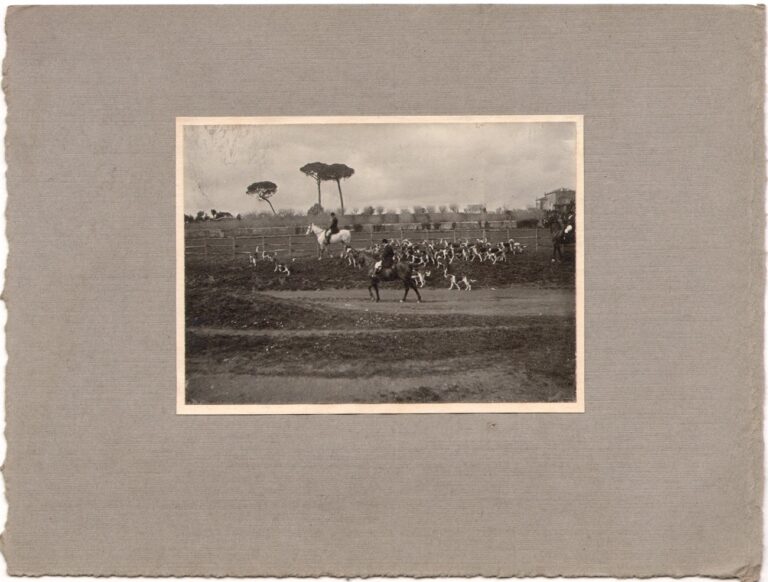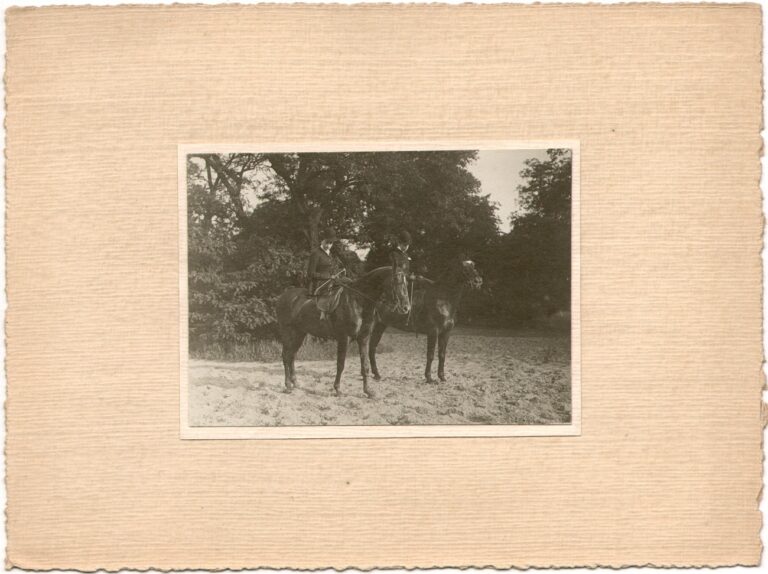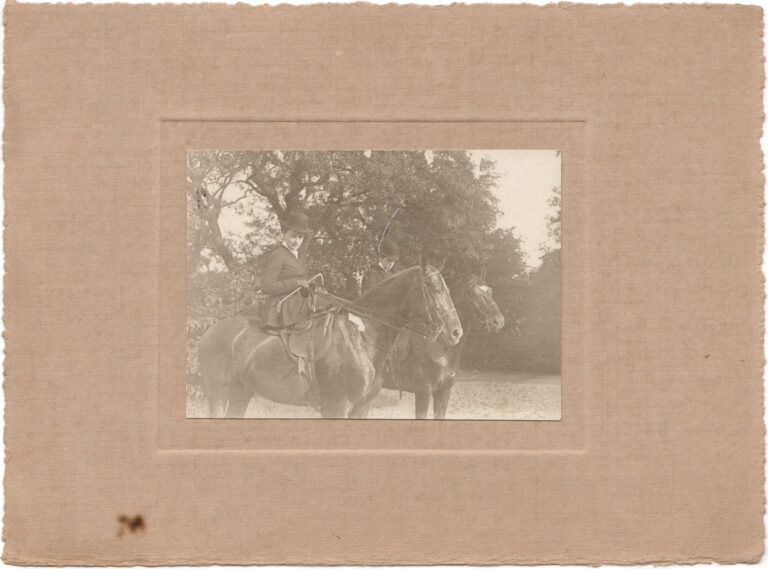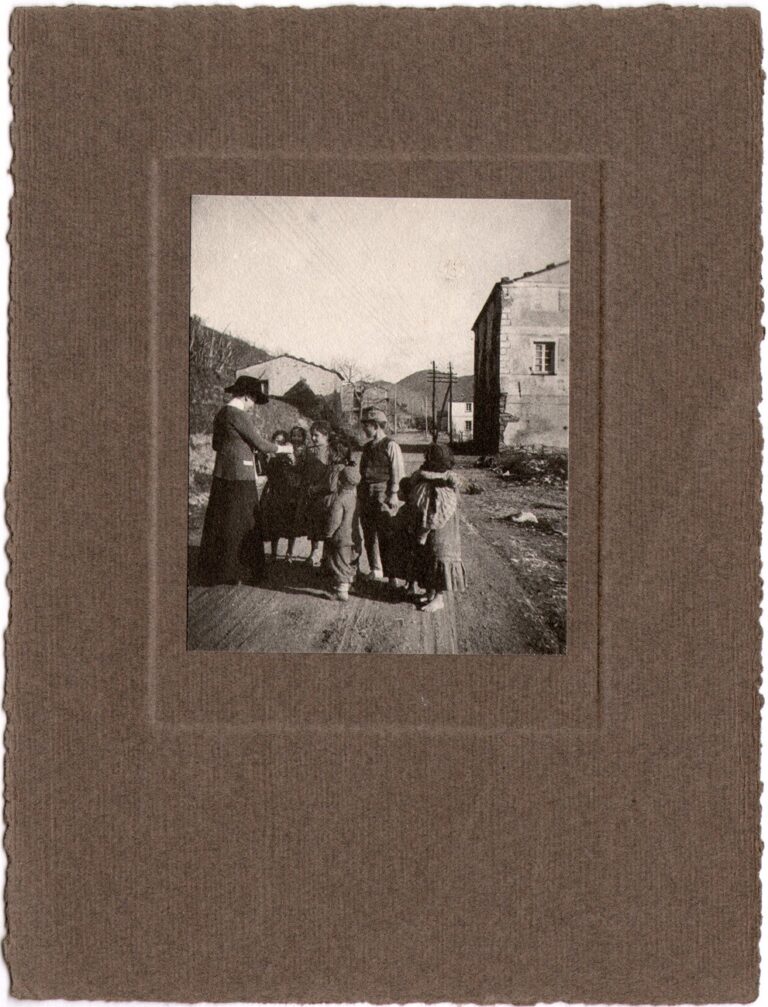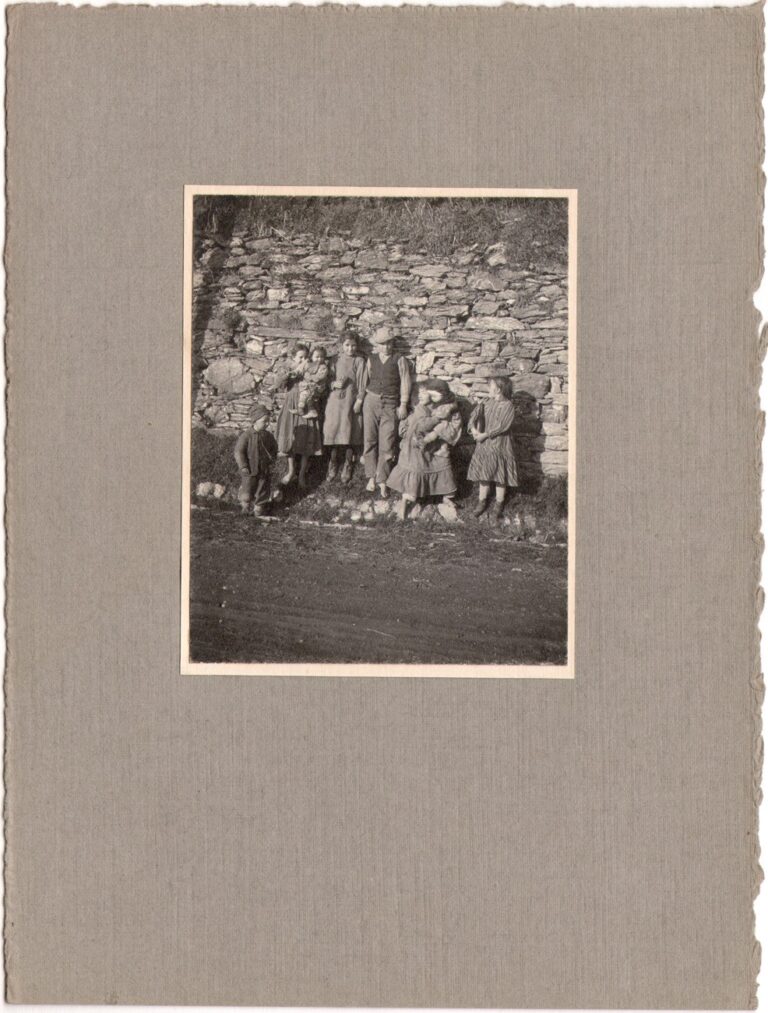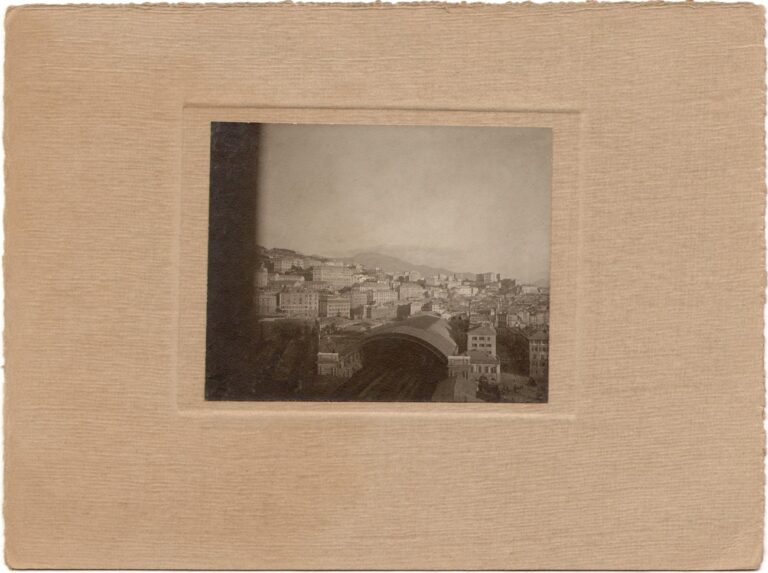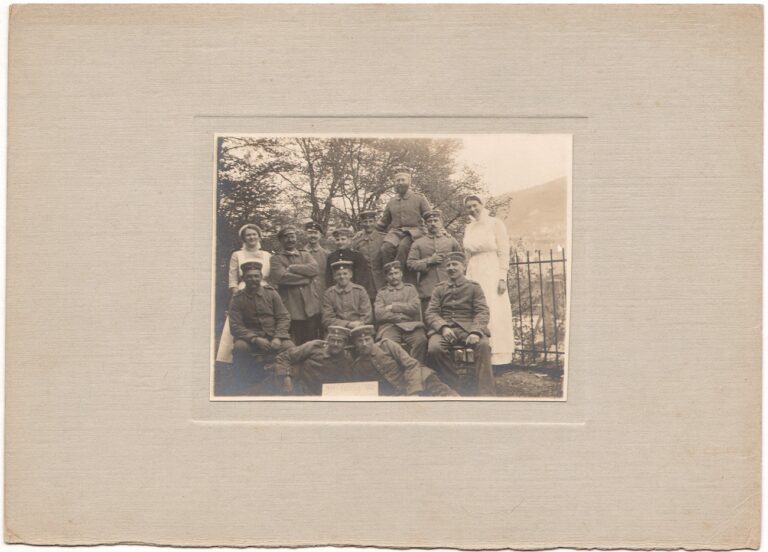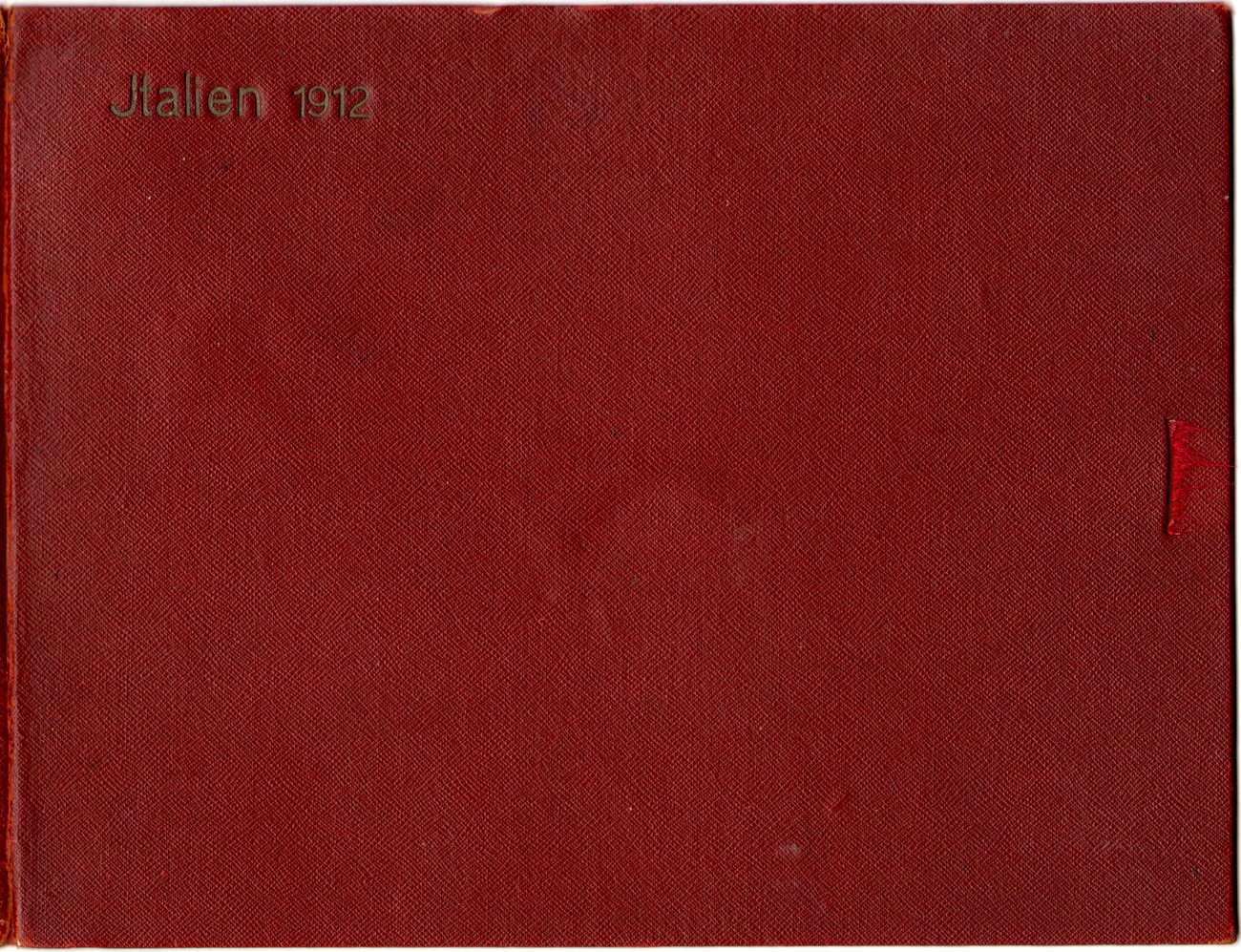
Italian Pictorialist Album: Circa 1912
Descriptive titles of photographs in this album have been supplied by PhotoSeed, not from the unknown photographer(s) who took them.
Country has additionally been kept Unknown in line-item tag descriptions to correspond to Unknown photographer of these works, which were taken in Italy.
Introduction
This extraordinary album (16.5 x 21.5 x 5.0 cm) of unique loose pigment prints was most likely the work of an unknown German photographer as it is stamped Jtalien 1912 (Italy 1912) on the album recto. This etymological difference for the word Italy is an attribute of the German language, where the capital letter J was often used to replace the capital letter I. (1.) Another strong indicator of a German maker, which we explore further in the accompanying blog post for this album, is the inclusion of a mounted snapshot (2.) showing a group of German World War 1 soldiers-smiling and flanked by two female nurses while posing for a photograph in an unknown location. A small sign propped up by two of the soldiers spells out “1914 Feldzug 1915”, indicating they took part in the first year campaign of the Great War. It is certainly possible one of these soldiers or even one of the nurses is responsible for taking the photographs making up the album.
Album Particulars
The album contains views of several well known Italian landmarks, including the Colosseum and Arch of Constantine in Rome as well as St. Peter’s Basilica from the Roman outskirts. However, most of the views in the album are not done in typical tourist snapshot fashion, but instead from an artistic viewpoint. For example, one of the more interesting photographs from a compositional perspective shows the dome of St. Peter’s— sprouting from the horizon line of an expanse of open fields before it. This atypical photographic vantage point seems deliberately sought out, with the final result a pleasing balance of open sky, the earth below and mankind’s illuminating achievement sandwiched between both.
Multiple building, cityscape and countryside views, coastline, native citizen and recreational photographs of Italy are included in this album, most done in our estimation with deliberate thought and with a pictorialist sensibility.
We have chosen to label these as pigment prints, owing to their multiple color variations and with the understanding that more than one process may have been used in their making, possibly including carbon, gum bichromate, ozobrome or other media. Additionally, some of the photographs have been mounted on trimmed art-paper supports within the impressed window openings on their respective colored cardstock mounts. (3.) It also seems likely the author of these works used a small camera. Since most of the prints average 3 1/4 x 4 1/4 in size, it is conceivable the original negatives were produced using a roll film type camera similar to the 3A Folding Pocket Kodak type or similar. If the photographer owned this model, the advantage of a viewfinder that could be shifted 90 degrees in order to take horizontal images would also explain the two formats represented in the album. On a provenance note, the album was purchased in late 2009 from a former owner in the Netherlands. Additional insight into this album is welcomed.
Notes:
1. Letter J: from: de.Wikipedia.org: accessed: 2011
2. This photograph is center mounted on a support consistent and native to the album.
3. These mounts show evidence they were cut from larger sheets as they are not all uniform. Their edges are often left rough-indicating they may have been individually cut by hand using a straight-edge as a guide rather than a clean cut that would be expected with the use of a razor or knife. The dimensions of many of the impressed window openings in which each print is glue-mounted in the corners is 9.4 x 11.9 cm but other sizes exist for the album. And like the support mounts, these embossed window openings are not uniform in terms of their location on each support. It would appear the photographer hand-sighted the template to create each embossed window on the recto of the mount before pressure was applied in order to crimp the mounts. Evidence on the mount verso typically show burnishing abrasions in the corner areas of the window as well.
